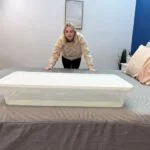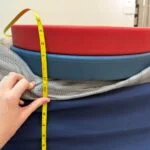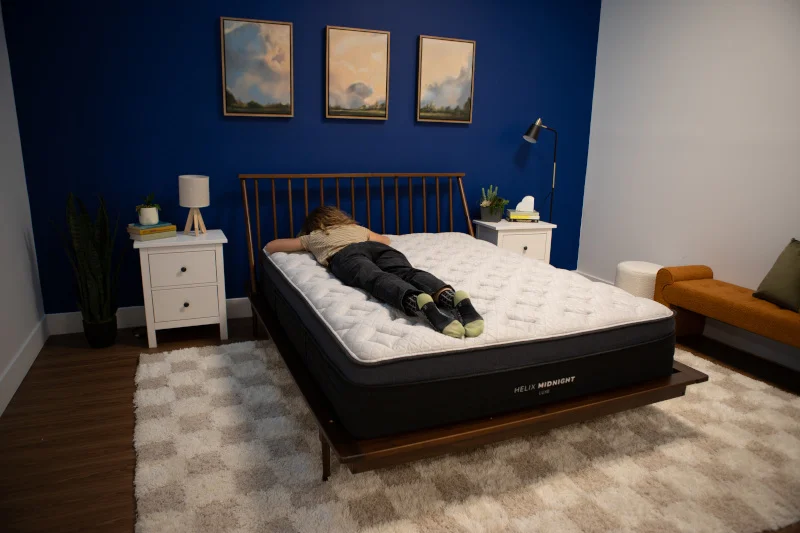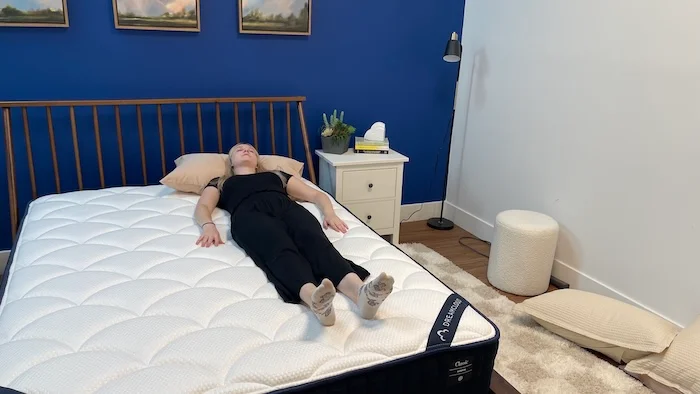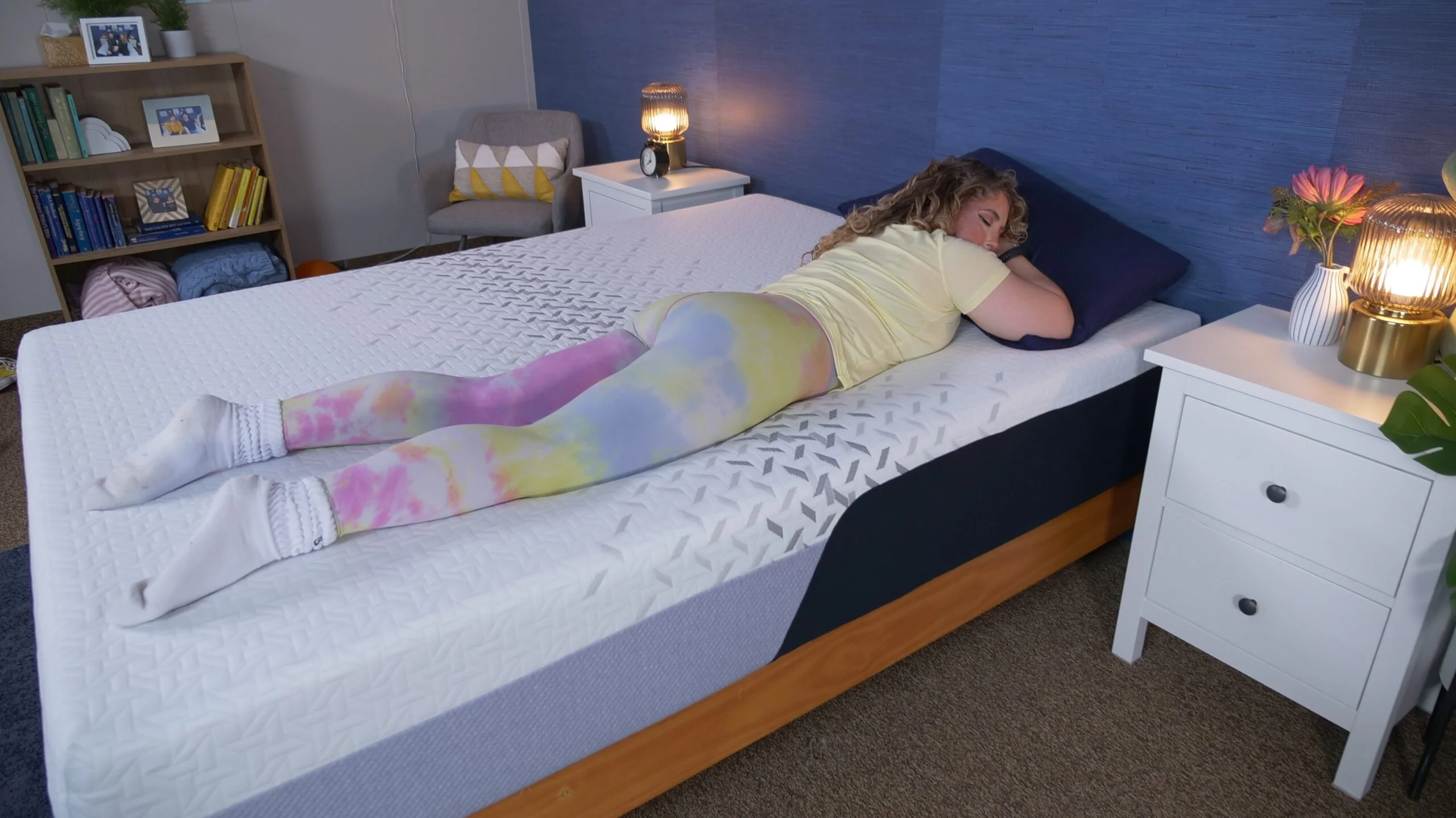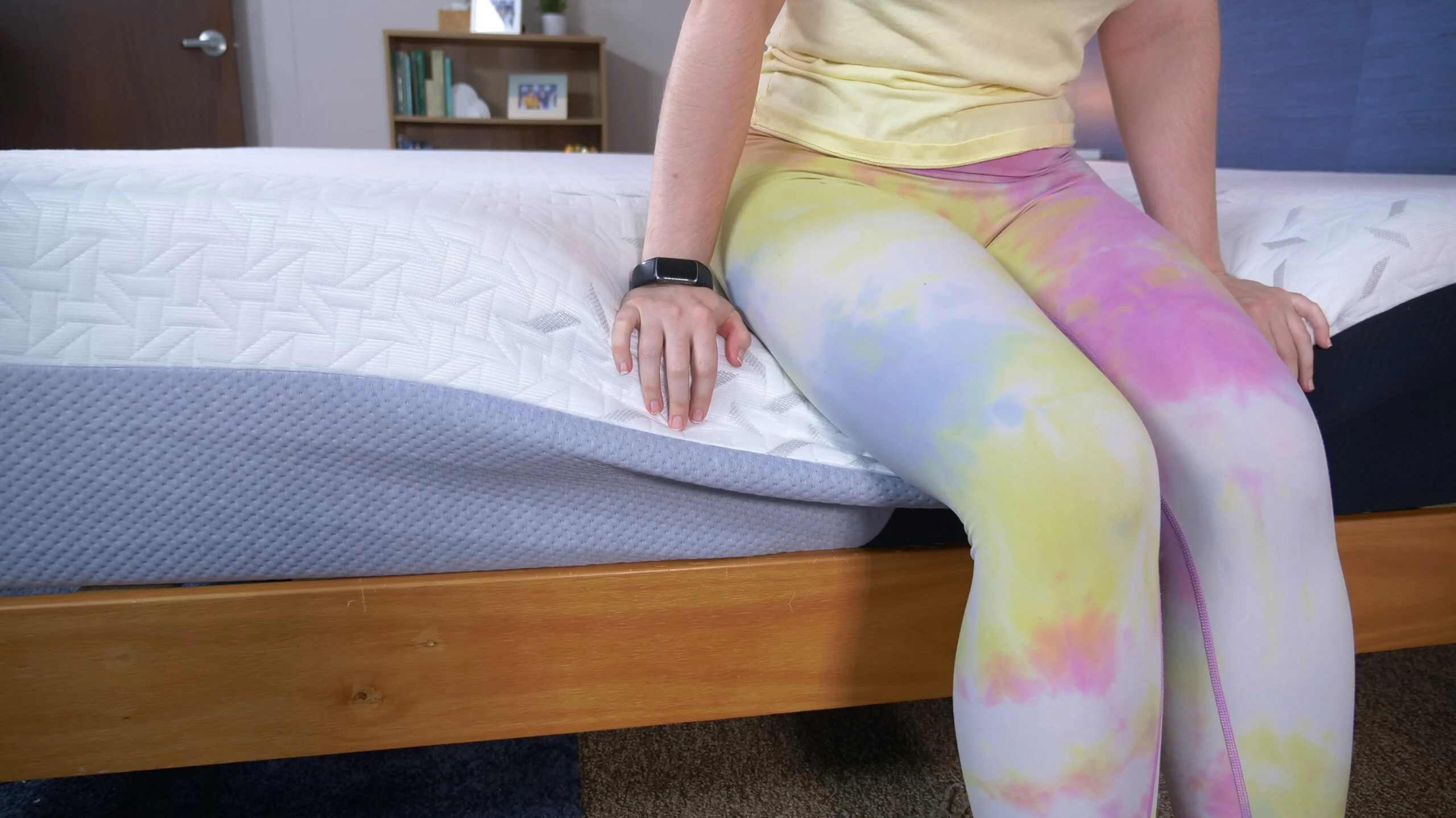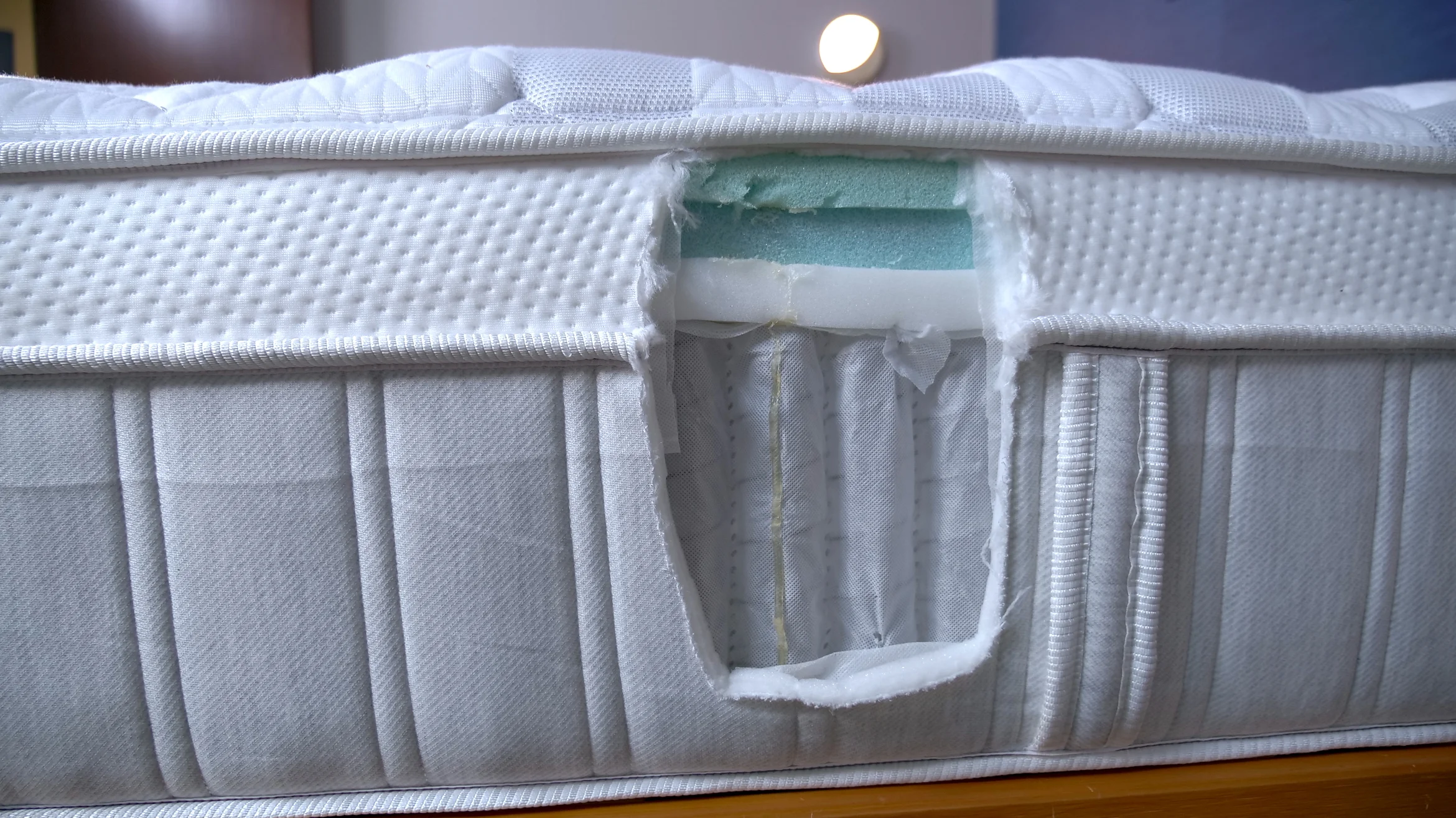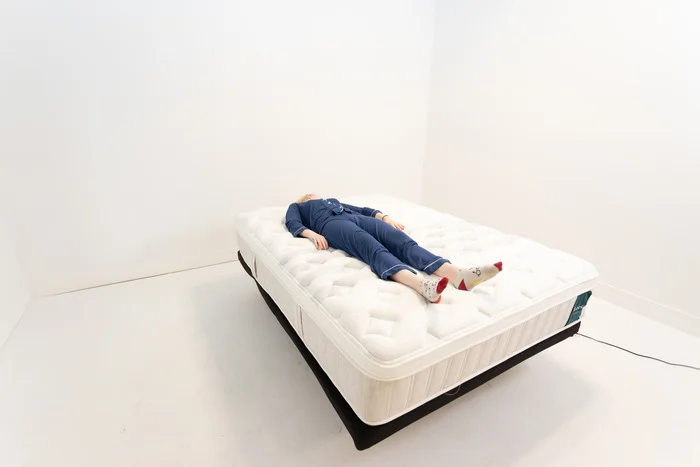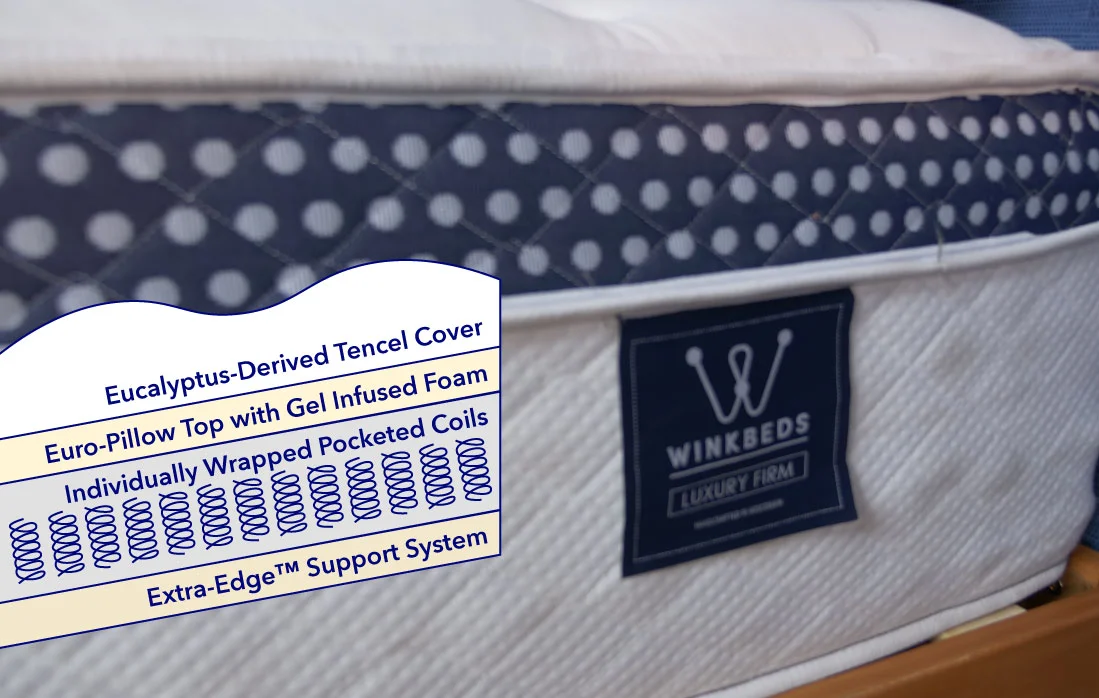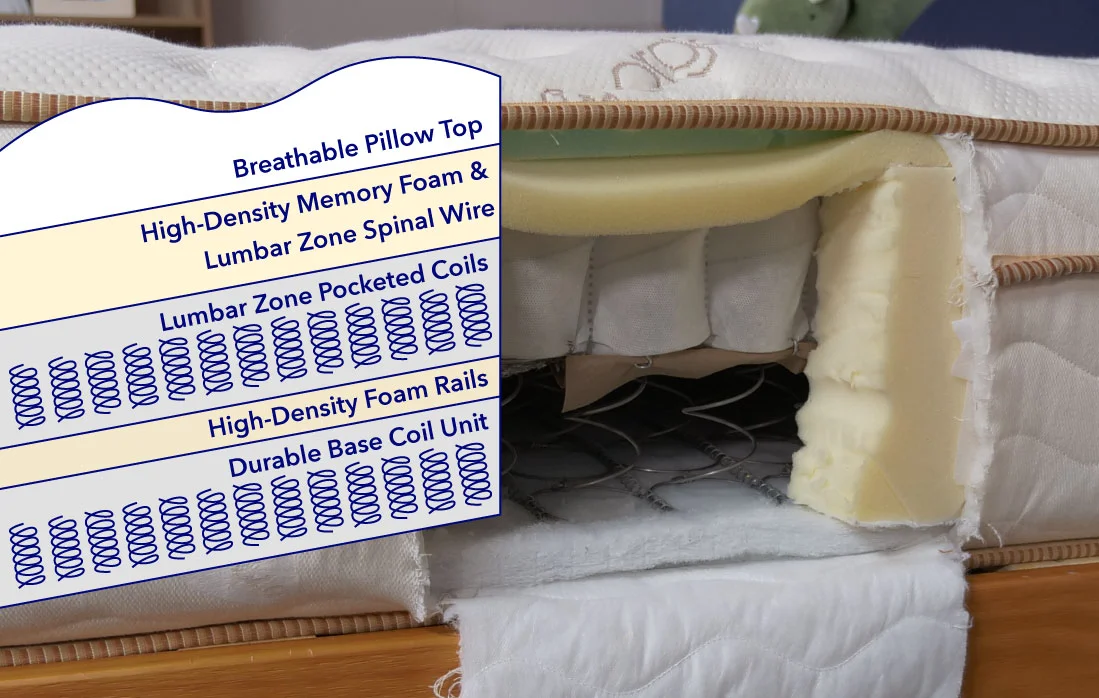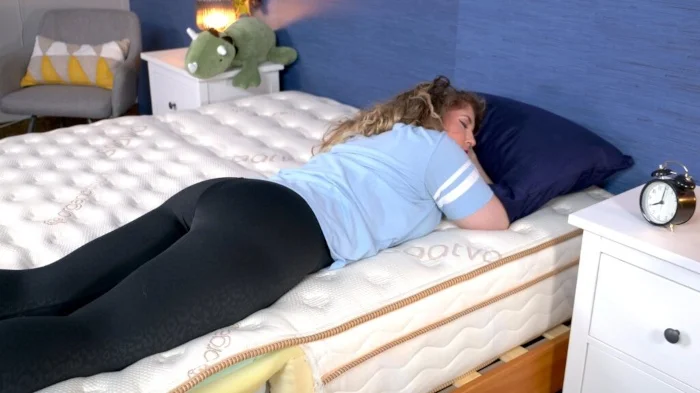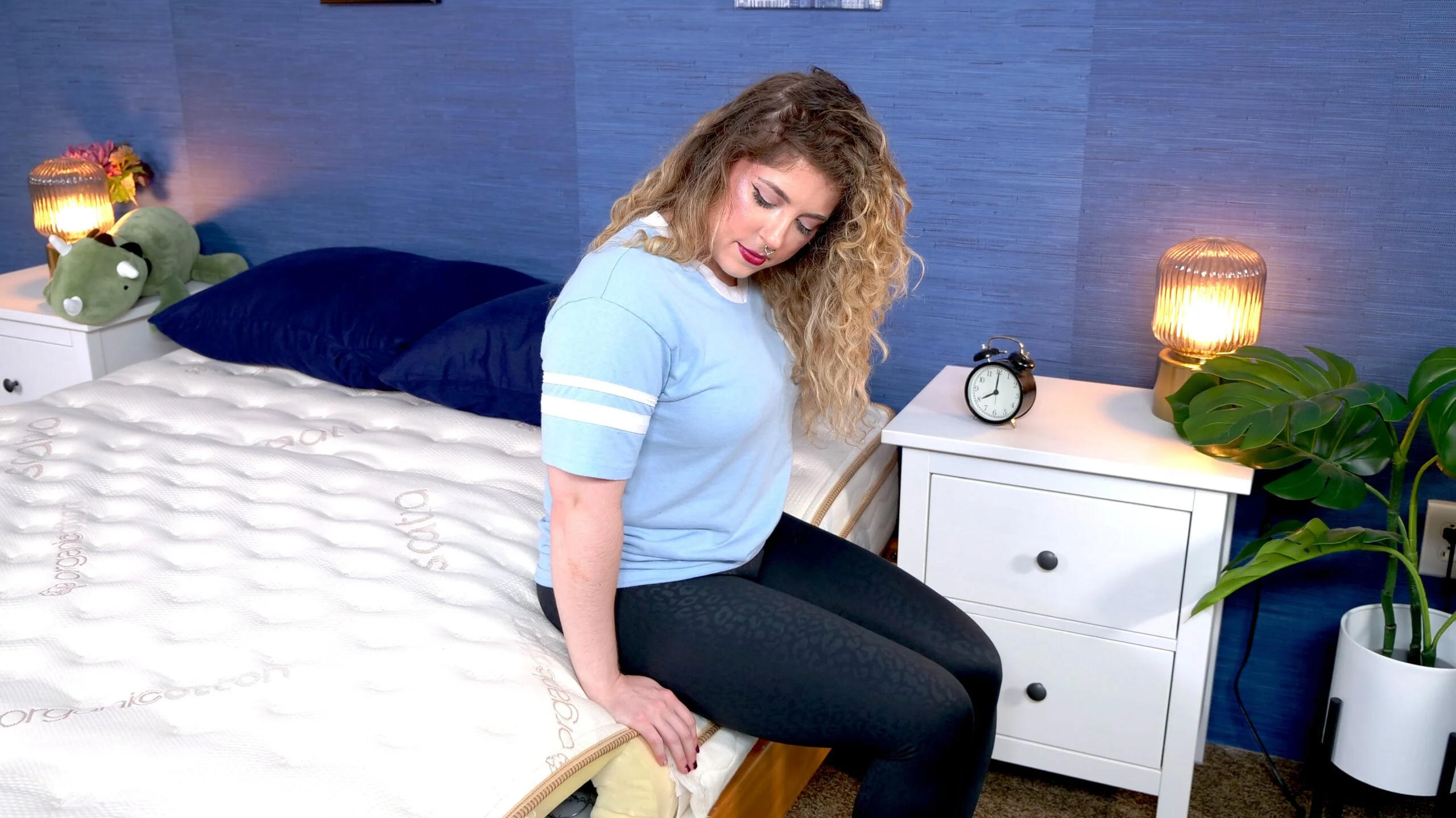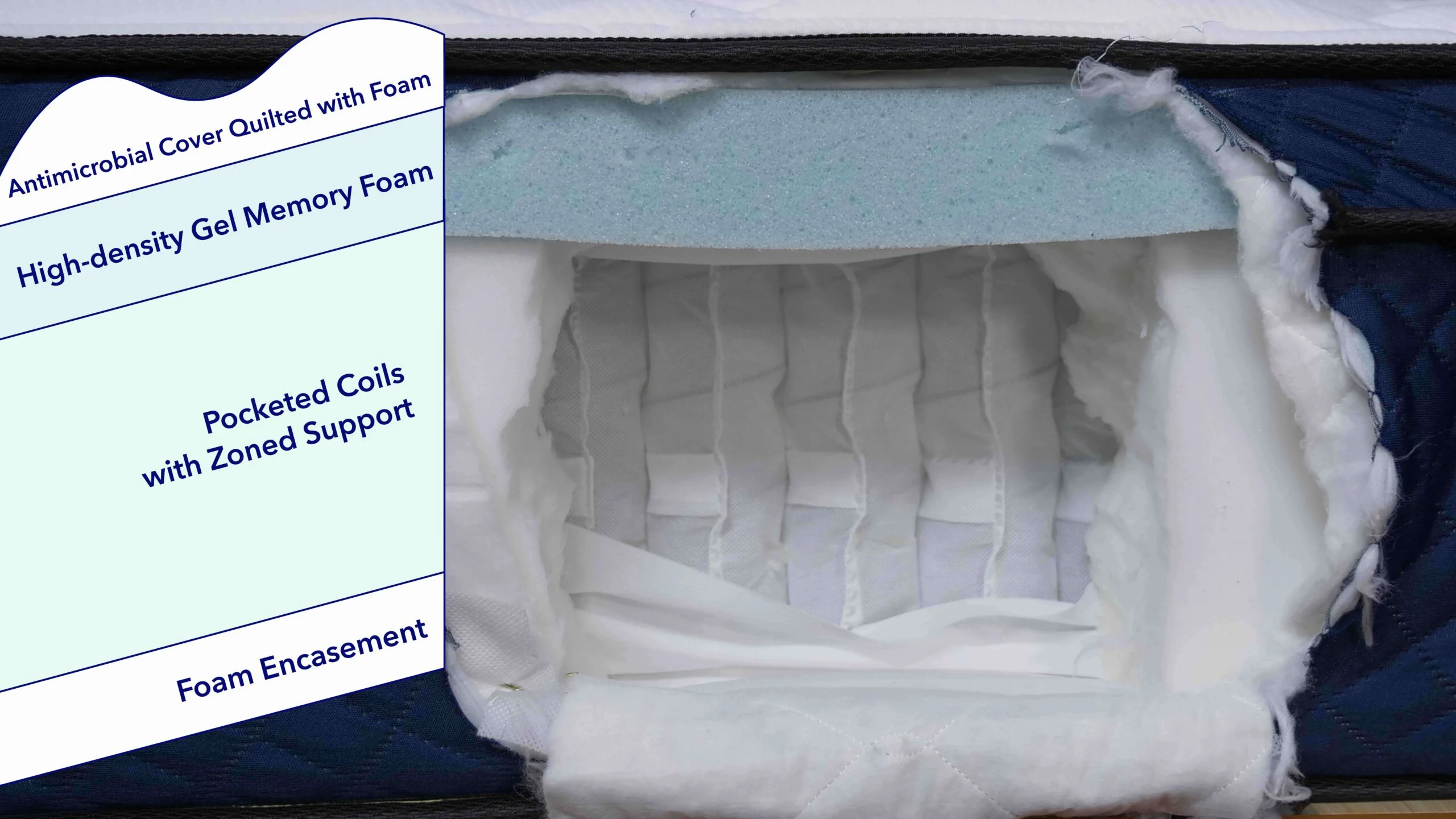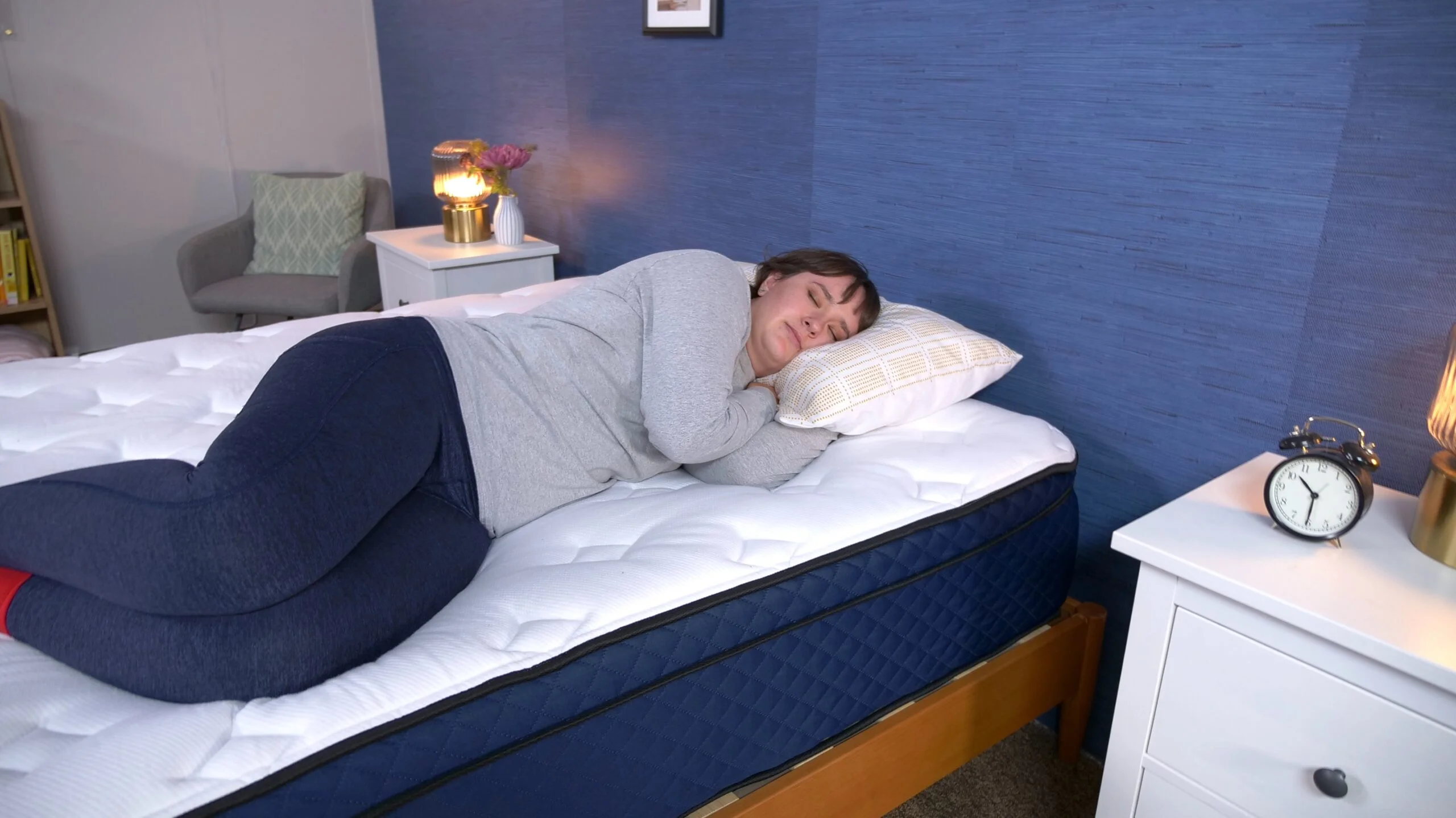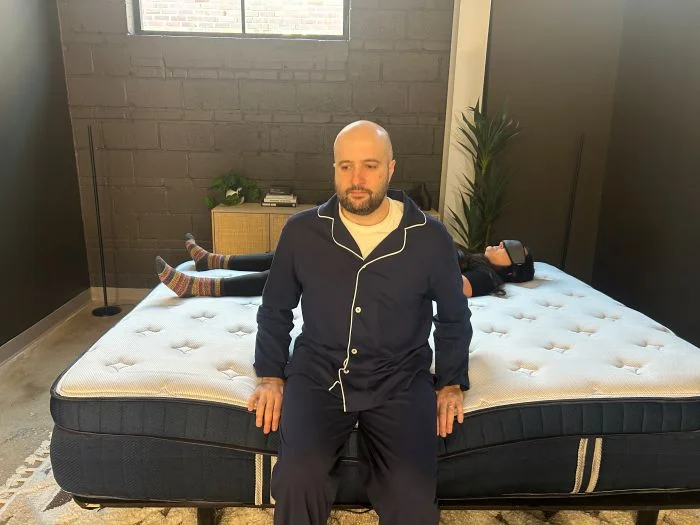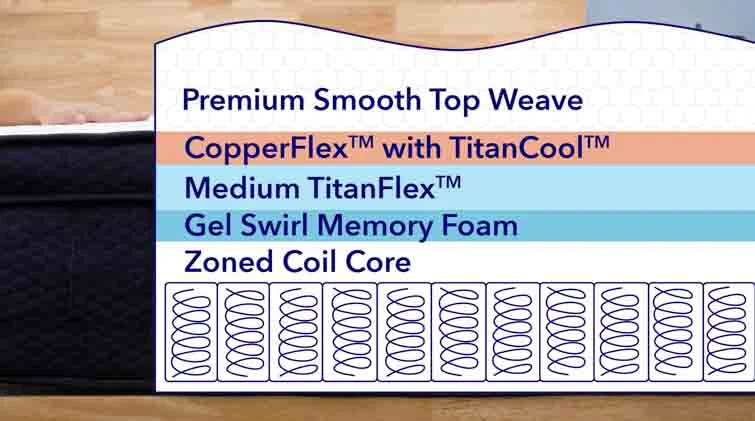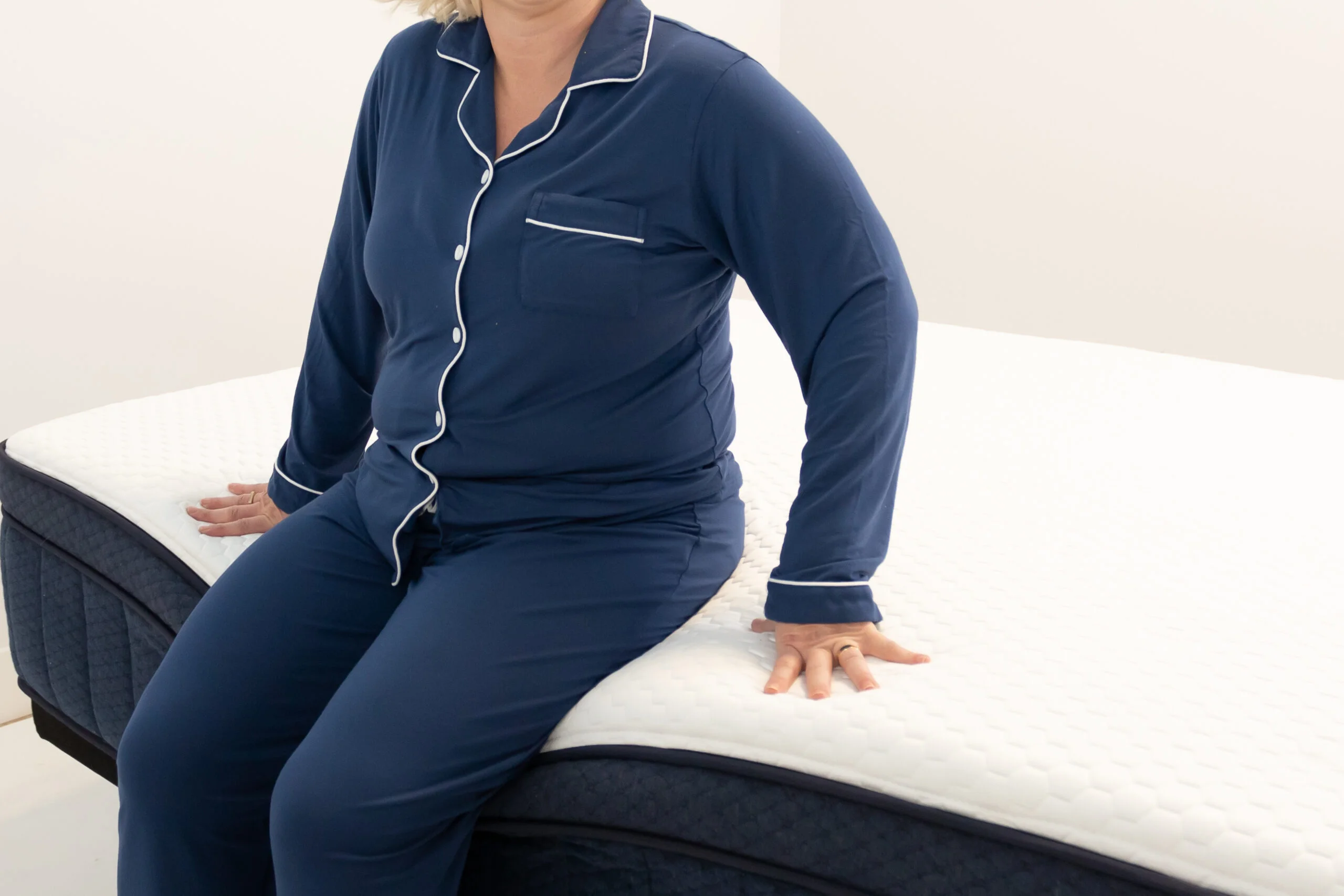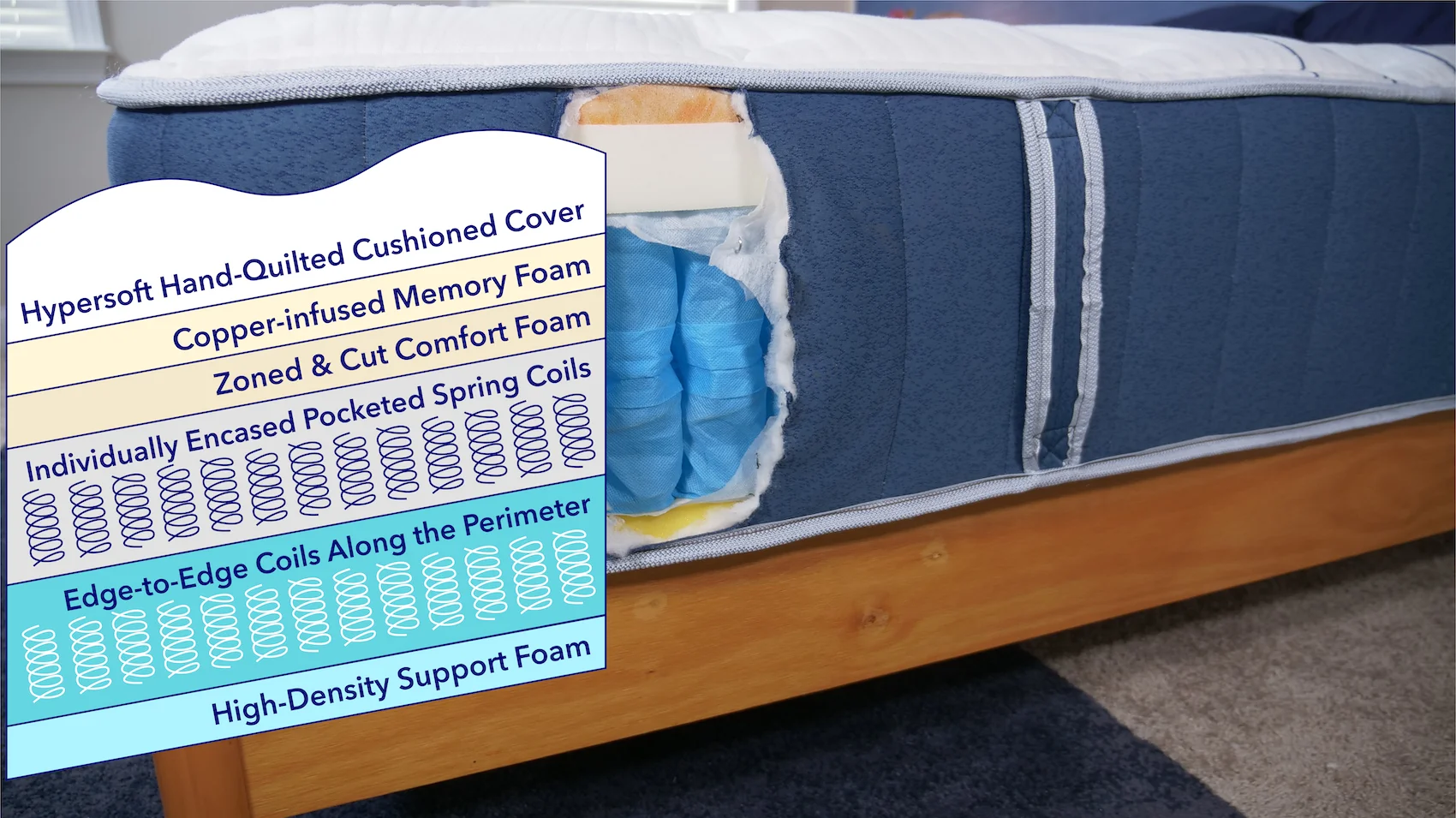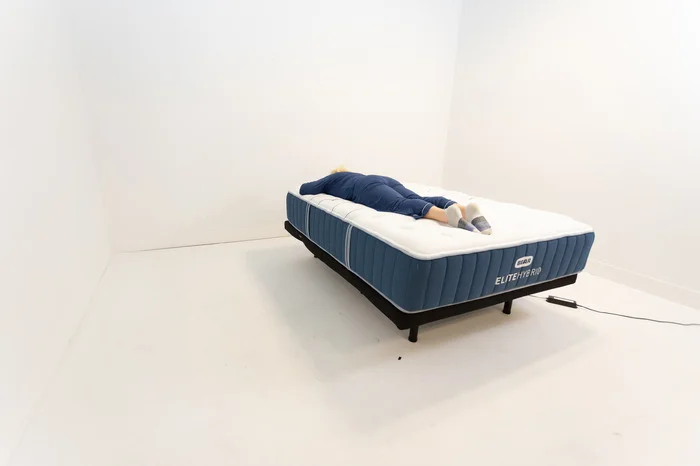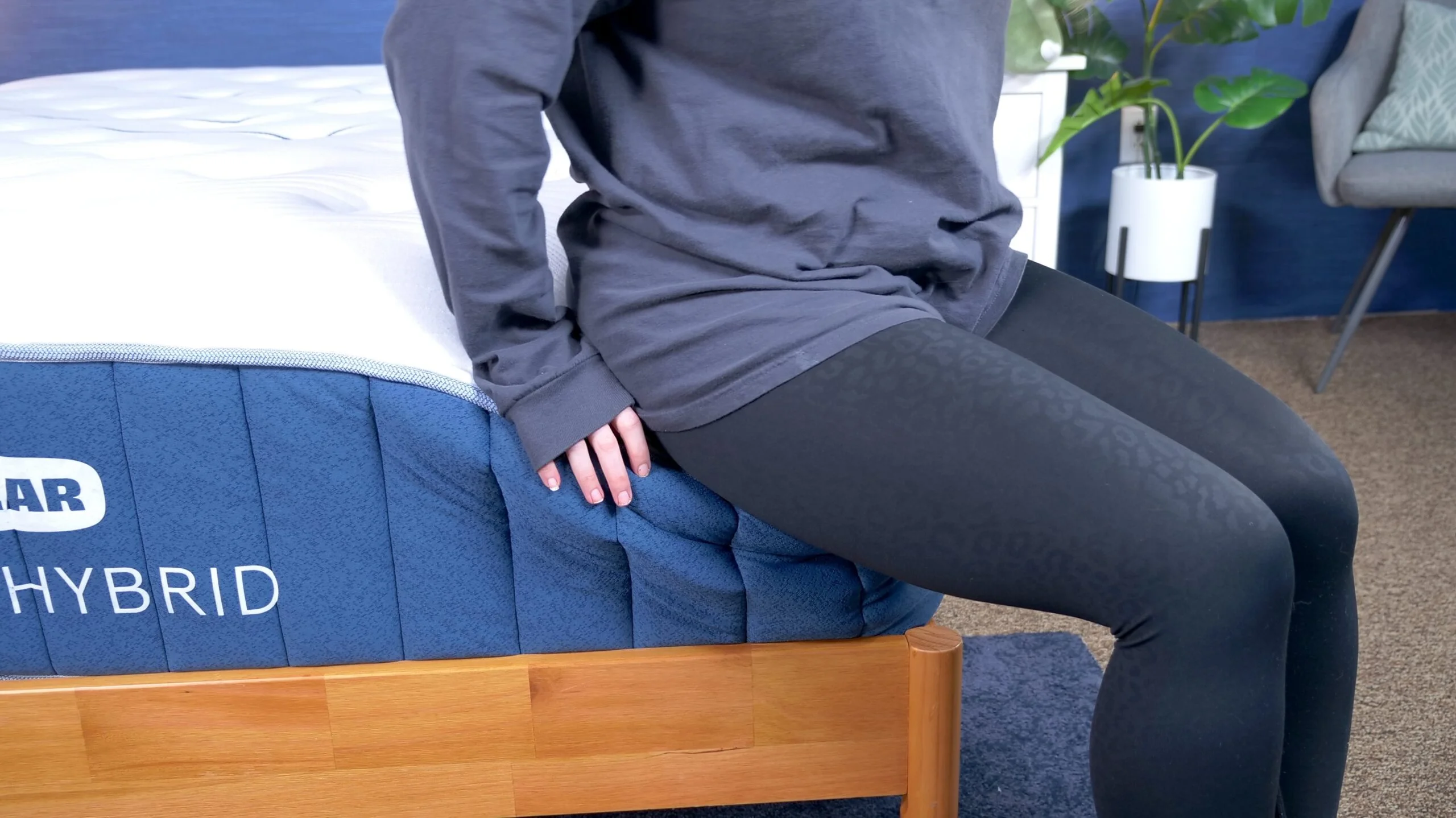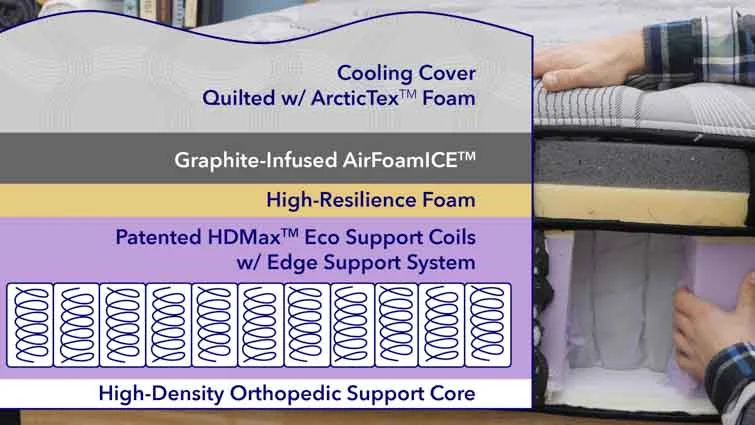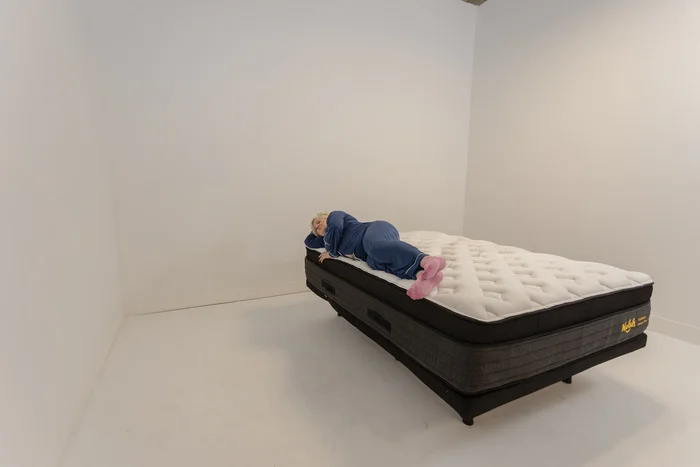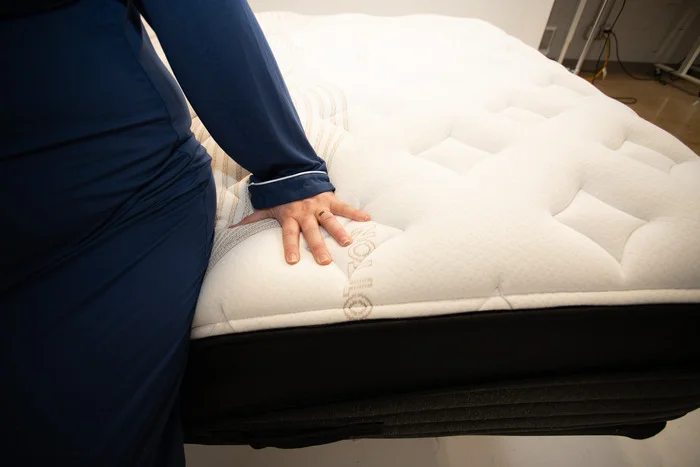Choosing the right mattress can fundamentally change your life for the better: improved sleep quality, less joint pain, and even allergy prevention. However, it’s a complicated marketplace with thousands of options that cater to different sleep styles, including factors like whether you need a mattress for side sleepers, or for back pain, or for couples. In other words, the best mattress for you might be very different from the best mattress for somebody else.
After hours of thorough research and testing, we have curated a list of the best mattresses to give you a better night’s sleep. Read on to find out which ones made our list, and for more information regarding the criteria that went into selecting them, below.
Sleepopolis’ Best In Rest Mattress – 2026
We chose the Helix Midnight Luxe as the best overall mattress because of its medium-firm feel — a firmness level that tends to be a good fit for a wide variety of sleepers. It also has several luxury features compared to the core Helix line, including a cushioning pillow top and reinforced edge support.
The 10 Best Mattresses of 2026
- Helix Midnight Luxe Mattress – Best Mattress Overall
- DreamCloud Original Mattress – Best Mattress for Combination Sleepers
- Nectar Premier Mattress – Best Mattress for Side Sleepers
- Leesa Sapira Chill Hybrid – Best Mattress for Shoulder Pain
- WinkBed Mattress – Best Mattress for Back Pain
- Saatva Classic – Best Cooling Mattress
- Silk & Snow Hybrid Mattress – Best Value Mattress
- Brooklyn Bedding Aurora Luxe Mattress – Best Mattress for Back Sleepers
- Bear Elite Hybrid Mattress – Best Luxury Mattress
- Nolah Evolution Hybrid Mattress – Best Hybrid Mattress
Top New Year's Deals
- Saatva Classic – $300 Off Orders of $1,000 or More
- Helix Midnight Luxe Mattress – Use Code SLEEPOPOLIS27 and Get 27% Off Sitewide
- Leesa Sapira Chill Hybrid – 20% Off Select Mattresses
- Nectar Premier Mattress – Save Up to 50% on Mattresses & 66% on Bundles
- DreamCloud Original Mattress – Up to 60% off mattresses + $599 of accessories included
How I Picked the Best Mattresses
Waking up pain-free is important! We quantify how well a mattress performs in this area by using a pressure map to assess where high-pressure areas are (or aren’t) during different sleeping positions.
During this test, we place a specialized mat over the mattress, which then records and displays where pressure builds up in the three major sleep positions. The data is transmitted to a computer, creating a color-coded graphic called a “pressure map” that helps us determine how comfortable a bed might be for certain areas of the body.

The pressure map measures pressure in pounds per square inch (PSI) to calculate an overall pressure relief score. Over time, we have found that the average PSIs for back and side sleeping are 15.1 and 12.6, respectively. A lower-than-average PSI usually means that the bed is less prone to pressure buildup in those positions.
If you or your partner is easily disturbed by movement, then a mattress with motion-dampening qualities is a must. Mattresses with strong motion isolation help prevent your partner’s (or pet’s) movements from disturbing you.
To assess motion isolation, one of our testers lies on the mattress next to a bin of water and moves around to see how much the water sloshes. Next, we invite another tester to lie blindfolded on one side of the bed while the other tosses and turns on the opposite side. The blindfolded tester raises their thumb whenever they detect movement on their side of the bed.
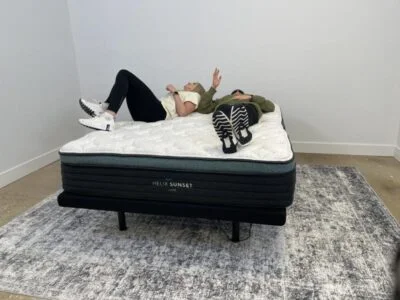
If you tend to sleep hot, live in a warmer climate, or share a bed with a partner, finding a mattress that can effectively regulate temperature is essential. Mattresses with well-ventilated materials and cooling technology will help regulate temperature and ensure a more restful, sweat-free sleep. Our in-house testers measure the surface temperature of each mattress with a thermal gun before and after lying on it for five minutes. The best beds for cooling typically do not warm up by more than 10 degrees during this test.

We’ve developed a rigorous 13-point testing methodology that tells us how each mattress performs and who it might be a good fit for. All of the beds on this list have been evaluated for pressure relief, cooling abilities, responsiveness, edge support, and much more. See the below photos for examples of our various tests.
Our team of certified sleep science coaches has tested more than 500 mattresses over the last decade, allowing us to guide more than 132,000 people to the best mattress for them. Not only do we use and evaluate these products ourselves, but we also consult with Dr. Raj Dasgupta, M.D., FACP, FCCP, FAASM, who’s quadruple-board certified in pulmonary, sleep, internal, and critical care medicine, to ensure we keep up to date with the latest in sleep science and medicine.
For mattress brands that make pain-related claims, we also bring in physical therapist Dr. Joe Tedesco, DPT, OCS, ATC, CSCS, to lie on these mattresses himself. He provides detailed insights on how each bed feels on his back, side, and stomach, and how it might perform for various conditions that impact comfort and rest.

Need help finding the right mattress?
Compare the Top Rated Mattresses of 2025
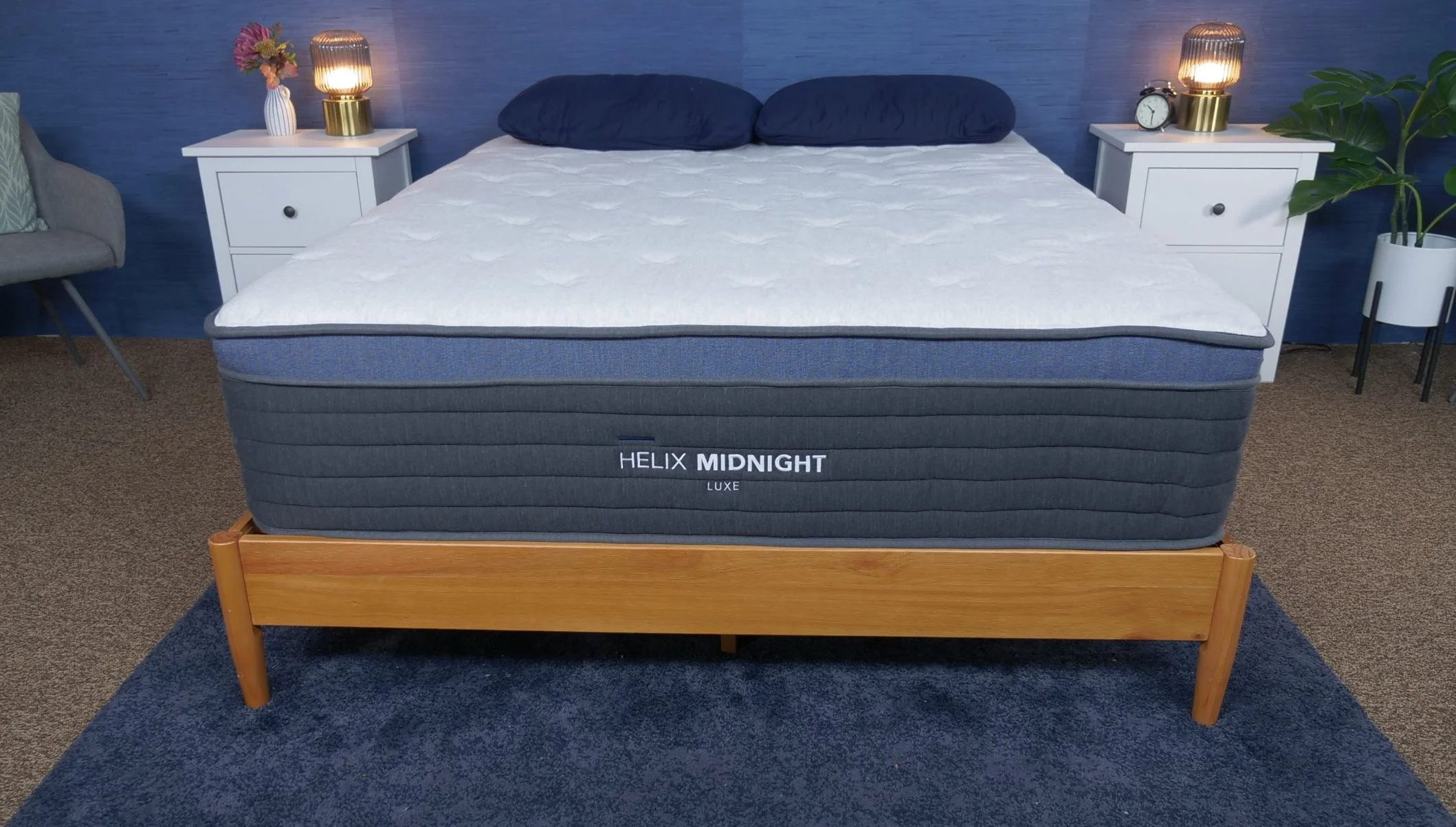 | 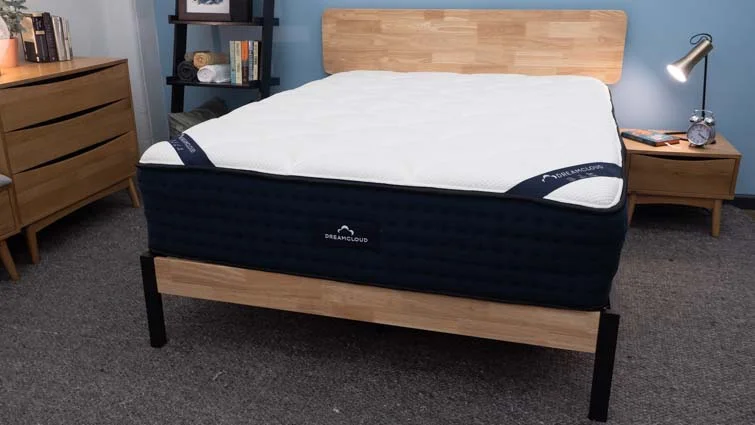 | 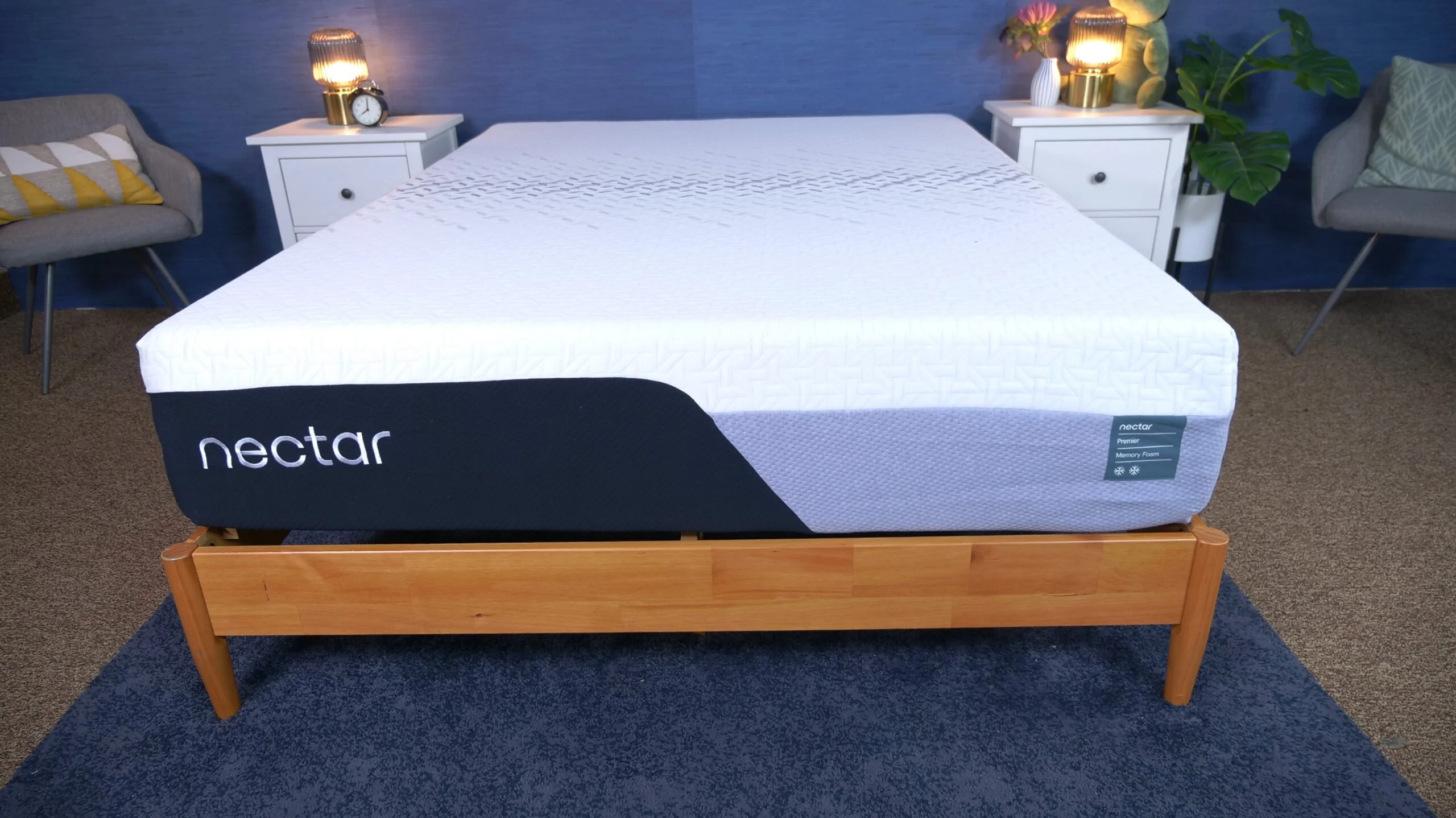 | 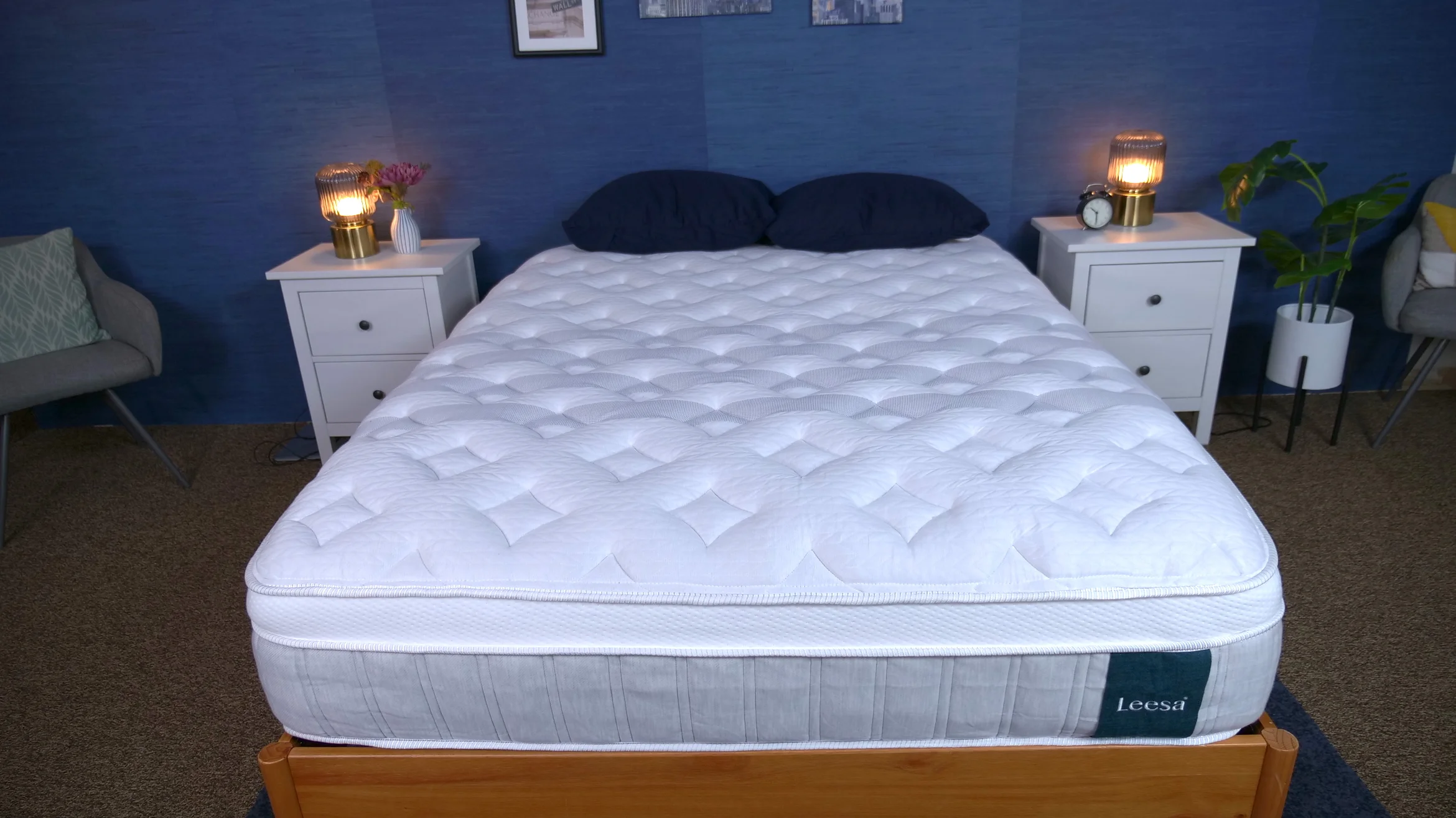 | 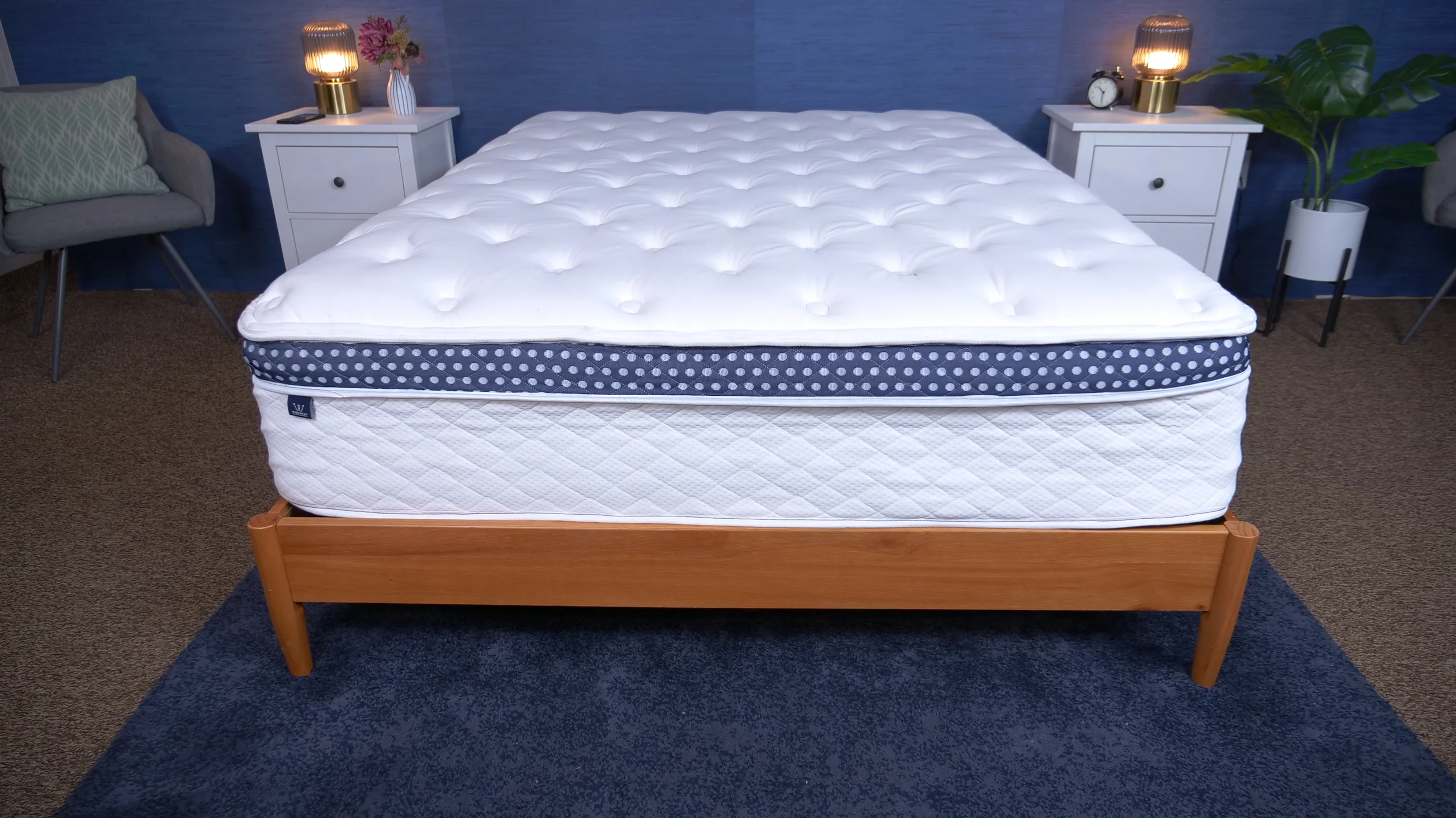 |  | 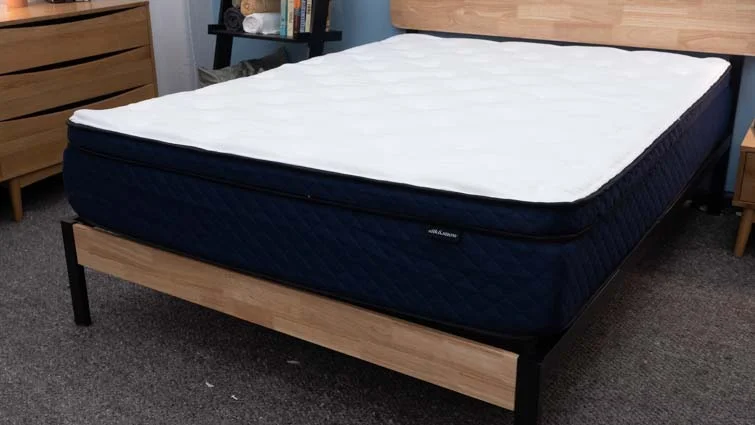 | 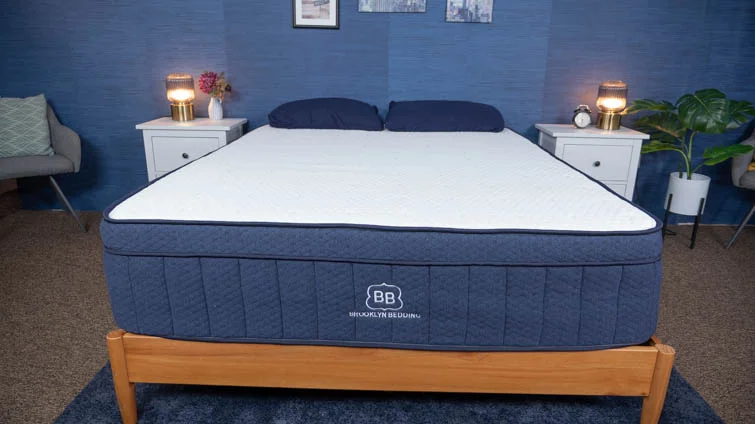 | 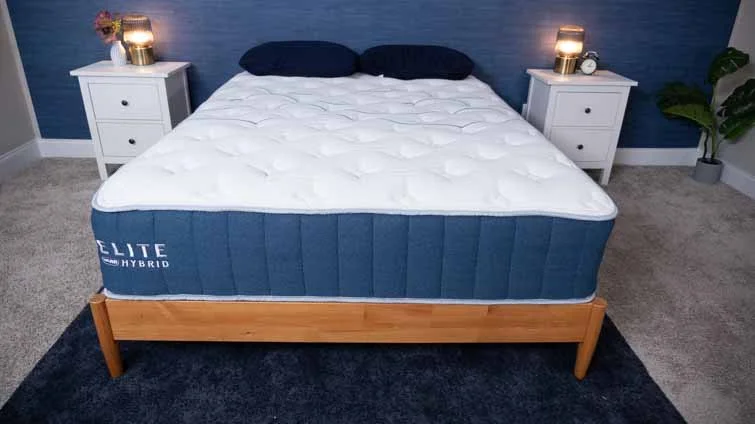 | 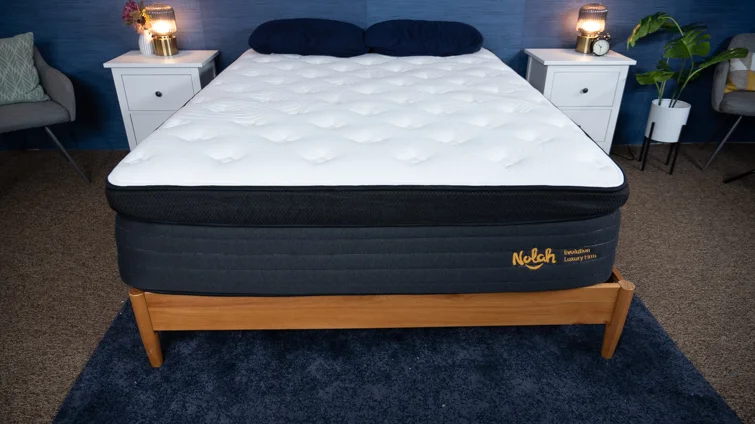 | |
| Helix Midnight Luxe Mattress | DreamCloud Original Mattress | Nectar Premier Mattress | Leesa Sapira Chill Hybrid | WinkBed Mattress | Saatva Classic | Silk & Snow Hybrid Mattress | Brooklyn Bedding Aurora Luxe Mattress | Bear Elite Hybrid Mattress | Nolah Evolution Hybrid Mattress | |
| Rating | ||||||||||
| Firmness | Medium-soft: 6/10 | Medium-firm: 6.5/10 | Medium-soft: 6/10 | Multiple firmness options | Firm: 7/10 | Multiple firmness options | Medium-firm: 6.5/10 | Multiple firmness options | Multiple firmness options | Multiple firmness options |
| Material | Hybrid | Hybrid | Foam | Hybrid | Hybrid | Innerspring | Hybrid | Hybrid | Hybrid | Hybrid |
| Cooling | — | — | — | — | — | — | — | — | — | — |
| Best For | Edge Support & Cooling | Combination Sleepers | Side Sleepers | Shoulder Pain | Back Pain | Hot Sleepers | Value | Back Sleepers | Luxury | Hybrid mattress shoppers |
Best Mattress 2025 Video Review
Helix Midnight Luxe – Best Mattress 2026
Helix has a line of six hybrid mattresses, each with a different level of firmness. The Midnight is one of their medium models. It has enough contouring for side sleepers, but should still be supportive enough for back sleepers, as long as they don’t mind a softer bed. Learn more in our video review.
What our tester says:
“I like the Helix Midnight Luxe for back sleepers and side sleepers. The medium-soft to medium-firm feel should give these folks the right balance of comfort and support.” – Nichole Mondshein, lead reviewer and mattress tester
The Helix Midnight Luxe tops our list as the best mattress because of its high marks in edge support, cooling, responsiveness, and pressure relief. In fact, the Midnight Luxe took home scores of 4 out of 5 or higher in each of those categories during our in-depth testing. We gave this bed an overall score of 4.5 out of 5 stars, which solidified it as our top pick for best mattress of 2025.
One of our long-term testers, Emily Schroeder, has been sleeping on the legacy model of the Helix Midnight Luxe for about six months. While this isn’t the most recent version of the Luxe, it sports the same medium-firmness, pressure-relieving foams, and zoned support coils. Since sleeping on the mattress, she’s reported “deeper sleep and less neck pain.” When our chief medical product tester, Dr. Joe Tedesco, DPT, OCS, ATC, CSCS, evaluated the updated Midnight Luxe model, he echoed the bed’s ability to relieve pain, not only at the neck but across the entire body. He said, “When you have a pillow, you’ll feel great because your shoulders are very open and everything else remains aligned, taking pressure off the neck.”
Dr. Tedesco also felt pressure relief in the side-sleeping position, which helped relieve pain at the joints and back. “I feel my pelvis being lifted when sleeping on my side, which can open up space in the lower back and provide a therapeutic feeling,” he said. Cait Giddings, a certified sleep science coach and member of our editorial team, also felt comfortable side sleeping, saying, “The marshmallowy pillow top cushioned my shoulder and hip and contoured me in a way that was really comfortable.” We ended up awarding the Midnight Luxe 4.3 stars for side-sleeping pressure relief.
Additionally, the Midnight Luxe does well for temperature regulation and ranks among our best cooling mattresses. It earned 4 stars in cooling, as it only warmed 7 degrees after our testers spent 5 minutes lying on it. Cait also called out the cool-to-the-touch mattress cover. “I didn’t notice it heating beneath me while I lay there,” she said. “It felt cool and crisp.”
A queen-size Helix Midnight Luxe is usually around $1,780 after discounts and can be found for even cheaper around holidays. Helix also has several other versions of the Midnight, including the standard Helix Midnight and the ultra-luxurious Helix Midnight Elite.
I will point out that the Helix Midnight Luxe is not the right mattress for back sleepers over 230 pounds. I think they’d be more comfortable on an extra-supportive mattress built with reinforced materials. For those looking for a bed that will support people with higher weights, check out the Helix Plus, which is made with denser foams and stronger coils that should accommodate heavier weights. Also, the Midnight Luxe falls a little short when it comes to the sleep trial period, which is 100 nights. While this is still a decent period to try out the mattress, we typically recommend full 365-night trials.
Motion Isolation: 4/5

Cooling: 4.5/5
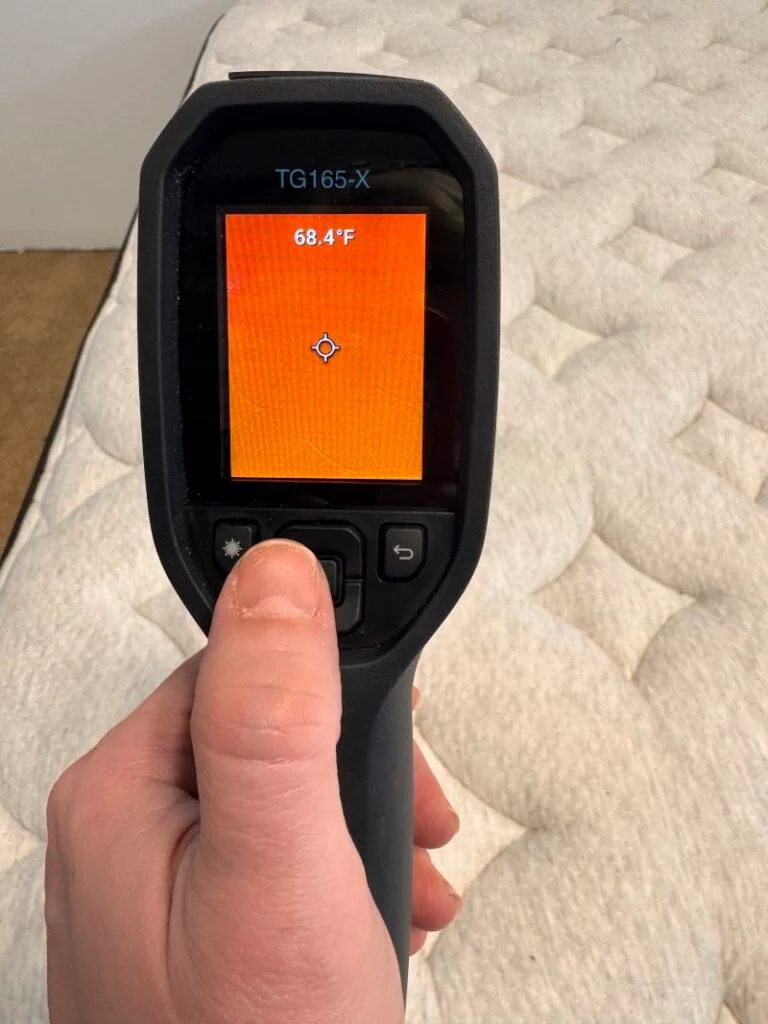
Responsiveness: 4/5
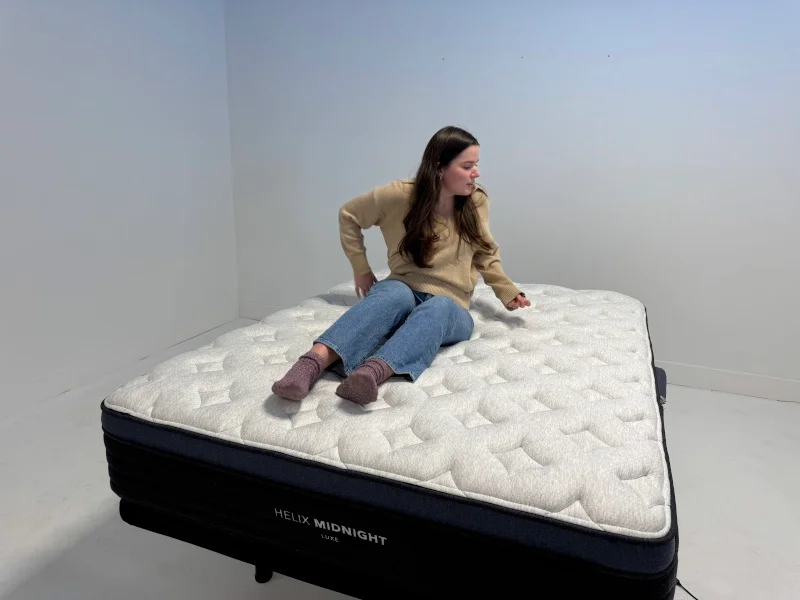
Edge Support: 4.8/5

Pressure Relief: 4.2/5

Firmness: 6.5/10
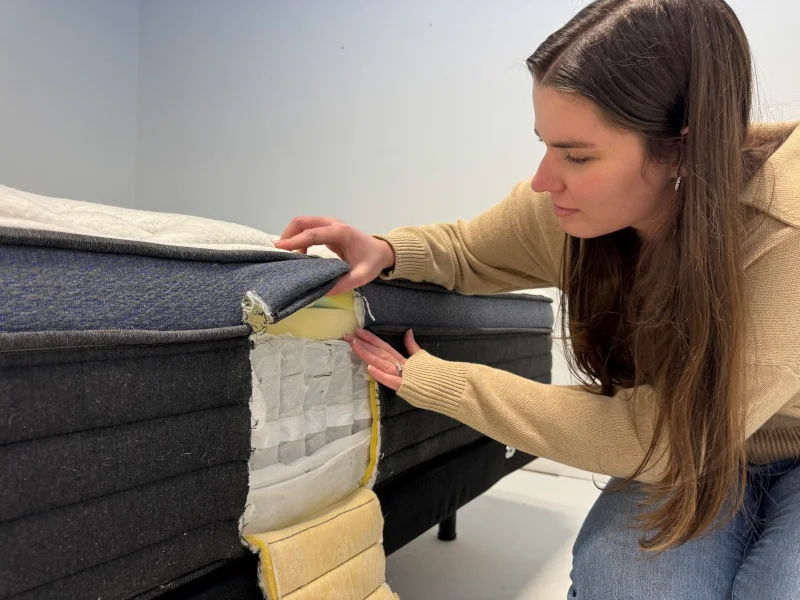
Learn more about this mattress in our Helix Midnight Luxe mattress review.
Helix Midnight Luxe Sleepopolis Scores
| Test | Product Score | Average Score |
| Firmness | 6.5 | 6.7 |
| Pressure Relief Side | 4.3 | 3.5 |
| Back Pressure Relief | 4 | 4 |
| Motion Isolation | 4 | 4 |
| Responsiveness | 4 | 4.1 |
| Cooling | 4 | 3.0 |
| Edge Support | 4.8 | 4 |
| Bounce Height | 25 inches | 16.3 inches |
| Bounce Rating | High | Moderate |
| Sinkage | Moderate | Moderate |
| Sex Score | 4.3 | TBD |
| Noise | 5 | 4.5 |
| Off-Gassing | 4 | 4.2 |
| Trial Period | 3.5 | 4.2 |
| Warranty | 5 | 4.6 |
| Full Rise | 5 | 4.7 |
| Unboxing/Moving | 3 | 4.4 |
DreamCloud – Best Mattress for Combination Sleepers
With soft foam and a sturdy layer of innerspring coils, the DreamCloud strikes a balance between comfort and support — a little bit of contouring up top and on-top-of-the-bed feel that comes from the bottom. It’s a fairly firm mattress that we think is most comfortable for back sleepers. It also has some luxury touches such as a cashmere-blend cover that are reminiscent of a high-end hotel. Learn more in our DreamCloud video review.
What our tester says:
“Lightweight and average-weight back sleepers will find a great balance between spinal support and plush cushioning at the lower back. This bed also performed very well on our cooling tests, making it a great pick for hot sleepers.” – Riley Otis, staff writer and certified sleep science coach
A combination sleeper is someone who switches between different sleeping positions at night. If that’s you, then you need a responsive mattress that allows you to easily shift between back, side, and stomach-sleeping positions while feeling supported in each. Our pick for the best mattress for combination sleepers is the DreamCloud, a luxury hybrid mattress that scored a perfect 5 out of 5 in responsiveness. It also had an impressive 4.3 in pressure relief.
Sleepopolis expert tester Bridget Chapman put the DreamCloud to the test, immediately noticing its bounciness. “As soon as I laid down on the DreamCloud, I could feel the springiness stemming from its layer of springs. It was very easy to move between my back, side, and stomach,” she says. Bridget, who has personally tested dozens of mattresses, says the DreamCloud has a firmer feel, rating it a 7 out of 10 on our scale. For context, this places the bed in the category of “firm.” While combo sleepers don’t have to opt for a firm mattress, these types of beds tend to offer more mobility than overly soft ones do.
Motion Isolation: 4.7/5
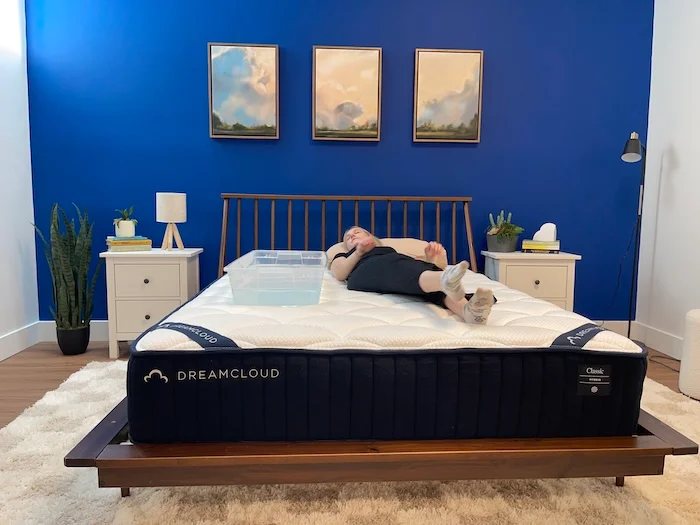
Cooling: 4.5/5
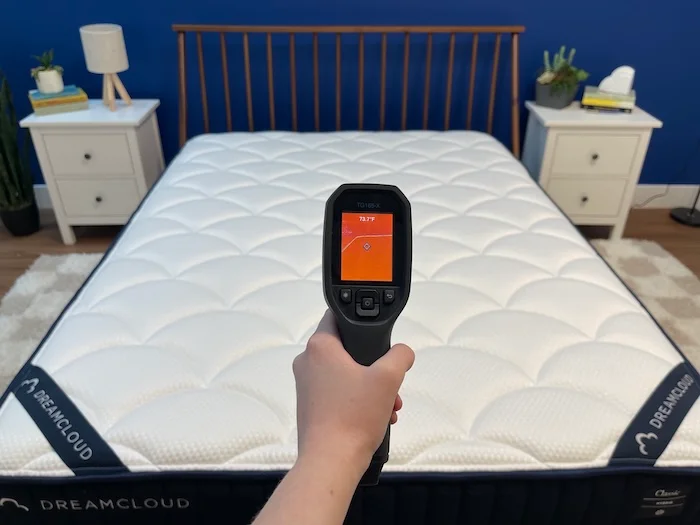
Responsiveness: 5/5
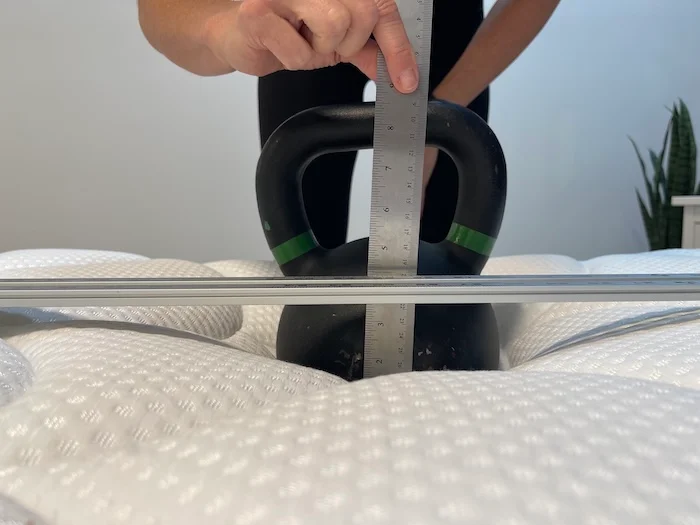
Edge Support: 4/5

Pressure Relief: 4.3/5
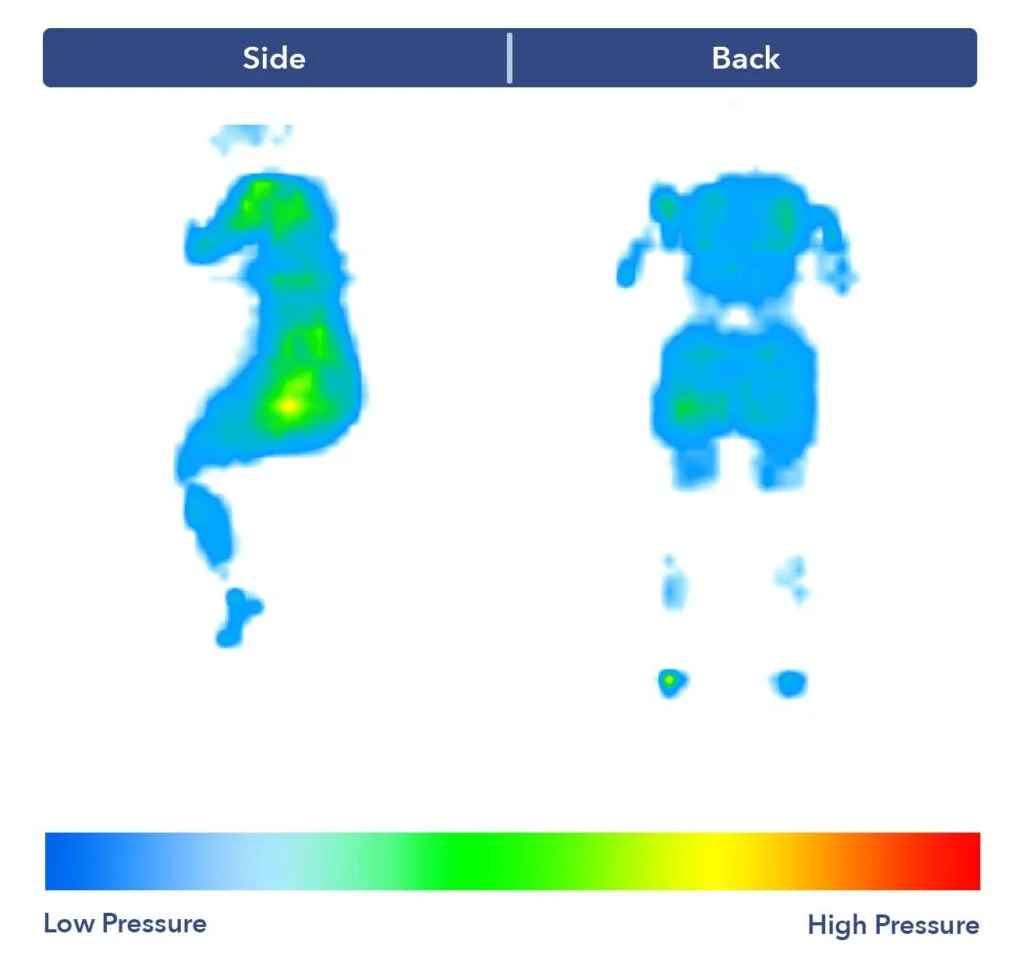
Firmness: 6.5/10
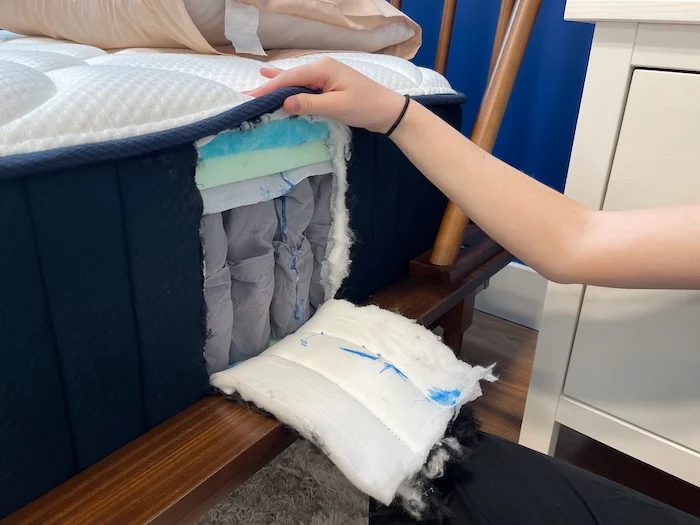
Combination sleepers also need a lot of support so they can move around without the mattress layers collapsing too much. No matter which sleeping position Bridget was in on the DreamCloud, she said she felt sufficiently lifted, so she gave it a 4.5 out of 5 in this category.
Where the I think the DreamCloud comes up a little short is with motion isolation. A bed with good motion isolation often isn’t as easy to move around on, so it should come as no surprise that a mattress as responsive as the DreamCloud has significant motion transfer, sending high vibrations to our seismometer. “Another tester and I got on the mattress together, and I could feel every one of their movements,” Bridget notes. This isn’t great news if you sleep with someone else in bed who tosses and turns a lot, because it means you’ll probably feel it.
One other important thing to know about the DreamCloud: Because of its springiness, it doesn’t offer the kind of deep sinking a memory foam mattress would. Our testers said they felt more “on top” of the bed than “in” it.
You can get even more details about how this bed tested in our DreamCloud mattress review. If you’re after something with more sinkage, I recommend checking out the Saatva Loom & Leaf. It has a luxurious, hotel-like feel, but with a lot more of that memory foam softness.
DreamCloud Sleepopolis Scores
| Test | Product Score | Average Score |
| Firmness | 6.5 | 6.7 |
| Pressure Relief Side | 3.5 | 3.5 |
| Back Pressure Relief | 5 | 4 |
| Motion Isolation | 4.7 | 4 |
| Responsiveness | 5 | 4.1 |
| Cooling | 4.5 | 3.9 |
| Edge Support | 4 | 4 |
| Bounce Height | 4 inches | 16.3 inches |
| Bounce Rating | Low | Moderate |
| Sinkage | Deep | Moderate |
| Sex Score | 4.5 | TBD |
| Noise | 5 | 4.5 |
| Off-Gassing | N/A | 4.2 |
| Trial Period | 5 | 4.2 |
| Warranty | 5 | 4.6 |
| Full Rise | N/A | 4.7 |
| Unboxing/Moving | N/A | 4.4 |
Nectar Premier – Best Mattress for Side Sleepers
The Nectar Premier is a luxurious all-foam mattress equipped with quality materials. A moisture-wicking cover and gel-infused comfort layer create a cooling, thermoregulating mattress for hot sleepers. Perhaps its strongest attribute is its next-level pressure relief. Six inches of foam work to contour sensitive areas, but the high-density foam at the bottom of the bed provides plenty of support. Watch our video review to learn more.
What our tester says:
“My favorite thing about the Nectar Premier is its great pressure relief. This medium-soft mattress is a great fit for side sleepers looking for plush comfort. It might also be a nice fit for sleepers who deal with shoulder pain.” – Nichole Mondshein, lead reviewer and staff writer
Side sleepers tend to put the most pressure on their shoulders and hips. So when choosing the best mattress for side sleepers, we chose the all-foam Nectar Premier, which earned a perfect 5 out of 5 for side-sleeping pressure relief. However, the Premier didn’t stop there. It also earned a 4 or above in cooling and responsiveness.
When certified sleep science coach and expert tester Dan Caffrey tried the Nectar Premier, he found a medium-firm feel that’s just a touch softer than average. In the side-sleeping position, he found both soothing pressure relief at his joints and a supportive lift at his hips. He said, “Of all the positions, this mattress was most comfortable on my side. I got the contouring I needed at my shoulders and hips, and I didn’t feel like I was sinking too far into the bed.”
We further evaluated side sleeping on the Nectar Premier using a specialized mat that senses where pressure is building on the body. When our average-weight tester Erin Chiles lay on the mat, it created a color-coded image of her body using thermal technology, which we call a pressure map. As you can see, her hips, shoulders, and lower back are all displayed in blue, which indicates little to no pressure building in those areas.
Motion Isolation: 3.7/5
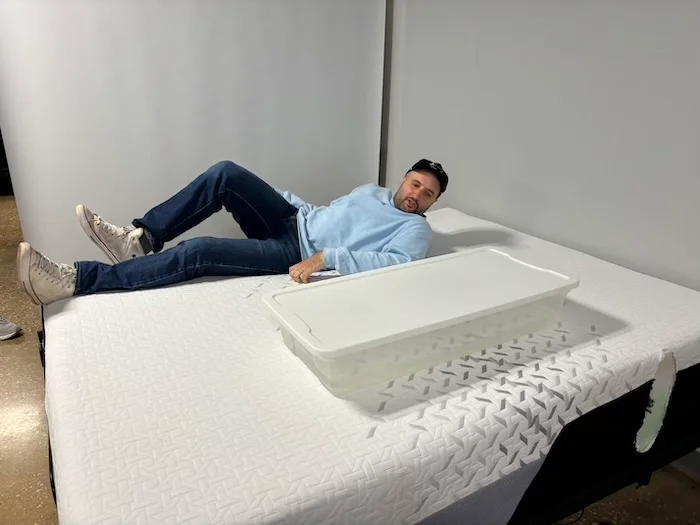
Cooling: 4.5/5

Responsiveness: 4/5
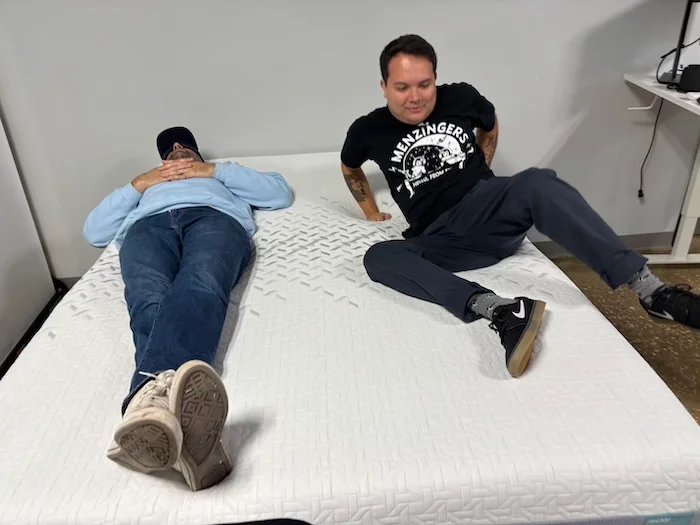
Edge Support: 3.4/5
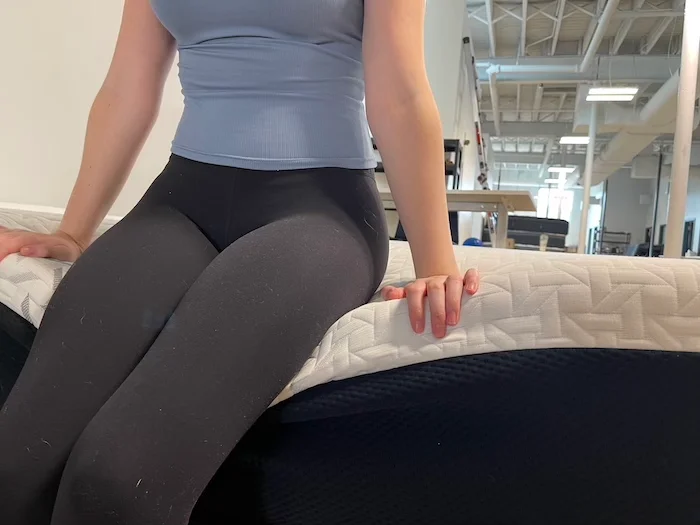
Pressure Relief: 3.7/5

Firmness: 6/10
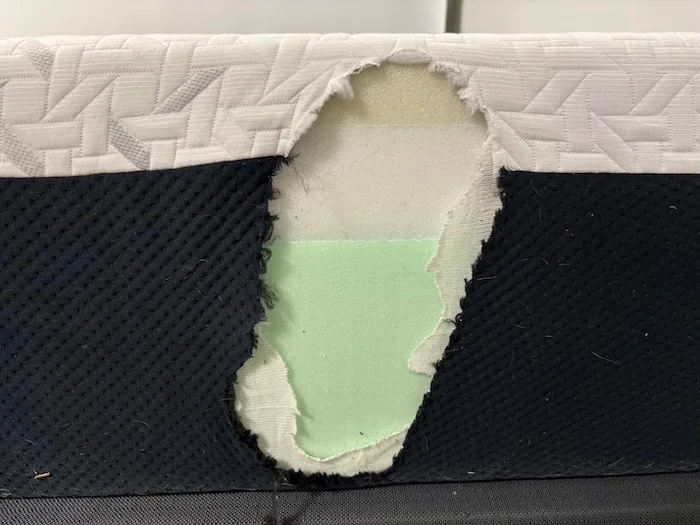
In addition to side sleepers, I also think this mattress is a great choice for hot sleepers and combination sleepers. Dan used a thermal gun to measure the Nectar Premier’s temperature before and after he lay on it for 5 minutes. The temperature increased by only 5.3 degrees during this test, which indicates good cooling and earned 4.3 stars. Dan also noted the bed feeling cool to the touch when he first lay down, which hot sleepers can also appreciate.
Meanwhile, combination sleepers will enjoy the Nectar Premier’s surprisingly bouncy surface. Dan and his fellow mattress testers noted that they were able to easily toss, turn, and change sleeping positions on the Premier during their tests. He gave it another 4 out of 5 in the responsiveness category.
While the Nectar Premier should be comfortable for side and back sleepers, stomach sleepers may need a more supportive mattress. These sleepers typically find the best spinal alignment on hybrid or innerspring mattresses that provide plenty of lift at the hips. Since this is an all-foam mattress with a slow-sinking feel, stomach sleepers’ hips may sink beneath their shoulders, causing back pain. In addition to stomach sleepers, I don’t recommend this bed to larger-bodied sleepers, as they likely require a stronger support system to prevent them from sinking too much. If you weigh over 230 pounds, please take a look at our best mattresses for heavy people.
Get more details on this bed in our Nectar Premier mattress review. If you’re a stomach sleeper who still wants a foam bed with some cushioning, I recommend you look at the Nectar Classic. Although it’s also made entirely of foam, its materials are firmer and more responsive.
Nectar Premier Sleepopolis Scores
| Test | Product Score | Average Score |
| Firmness | 6 | 6.7 |
| Pressure Relief Side | 4.2 | 3.5 |
| Back Pressure Relief | 3.3 | 4 |
| Motion Isolation | 4.5 | 4 |
| Responsiveness | 4 | 4.1 |
| Cooling | 4.5 | 3.9 |
| Edge Support | 3.4 | 4 |
| Bounce Height | Coming Soon | 16.3 inches |
| Bounce Rating | Coming Soon | Moderate |
| Sinkage | Coming Soon | Moderate |
| Sex Score | Coming Soon | TBD |
| Noise | Coming Soon | 4.5 |
| Off-Gassing | Coming Soon | 4.2 |
| Trial Period | 5 | 4.2 |
| Warranty | 5 | 4.6 |
| Full Rise | Coming Soon | 4.7 |
| Unboxing/Moving | Coming Soon | 4.4 |
Leesa Sapira Chill – Best Mattress for Shoulder Pain
The Leesa Sapira Chill is a hybrid mattress, available in three firmness levels. We tested the Medium-Firm model and felt it was just softer than average. It should be especially comfortable for back sleepers and side sleepers. The bed also has some effective cooling technology built into it, which helps to keep sleepers cool throughout the night. Learn more in our video review.
What our tester says:
“Sleepers with joint pain can appreciate the soft, plush feel, which can reduce tension and stiffness at their pressure points. I also think back sleepers and side sleepers will be comfortable on this mattress.” – Riley Otis, staff writer
If you’re waking up with pain in your shoulder every morning, it might be the fault of a too-firm mattress. That’s why I’m recommending the Leesa Sapira Chill Hybrid. Falling at a 6 out of 10 on our firmness scale, the Sapira Chill is a medium-soft bed, so it provides good cushioning and pressure relief at the joints, a category in which it scored above a 4 for both back and side sleeping. The quilted cover adds a lot of plushness to the bed and helps contour the hips and shoulders to prevent pain in both these areas, especially when sleeping on your side.
To test pressure relief, we spread out a pressure mat onto a mattress and have a tester lie on it to record the overall pressure in pounds per square inch (PSI) to see if any hot spots appear. The average overall PSI we see on a mattress in the side-sleeping position is 14.94; on the Sapira Chill, both our lightweight and average-weight testers had PSIs that were lower than that, indicating significant pressure relief. Although our heavy tester Cane Wilkes’ PSI was a tad higher than average, he said he still felt a lot of support and relief in this position and rated it 5 stars for this category. Overall, this bed earned 4.7 stars for side-sleeping pressure relief, and we think it’s compatible with every body type.
Motion Isolation: 3/5
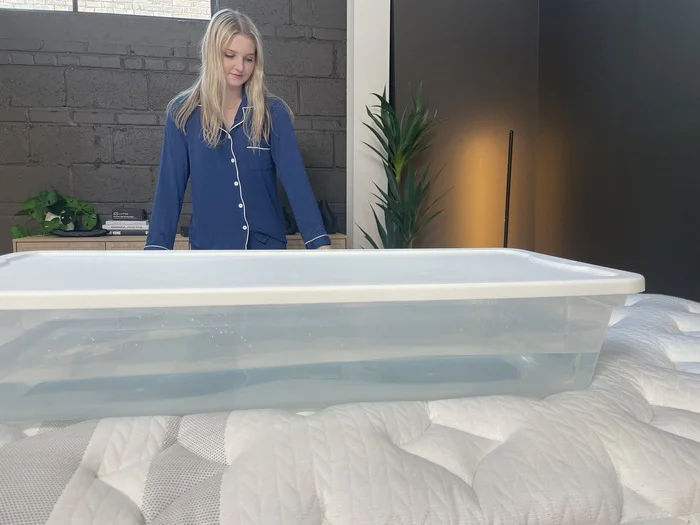
Cooling: 4.5/5

Responsiveness: 2/5
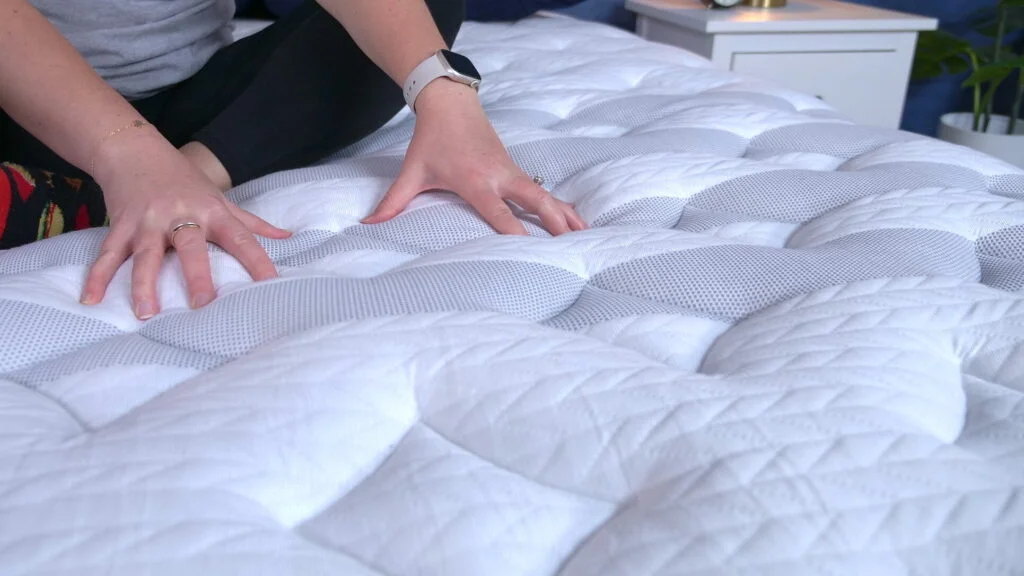
Edge Support: 3.4/5
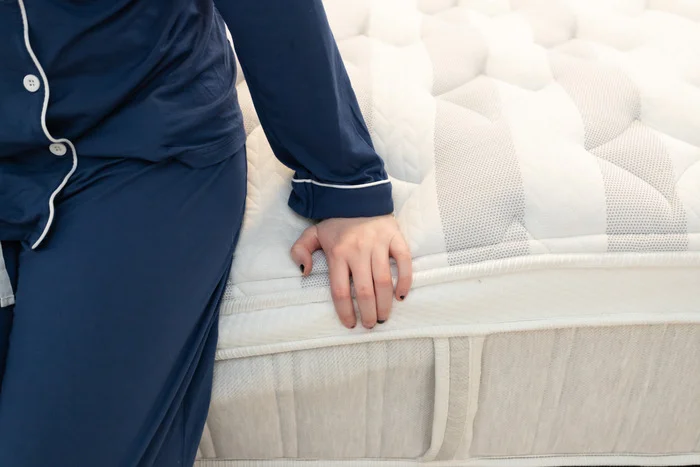
Pressure Relief: 4.5/5

Firmness: 6/10
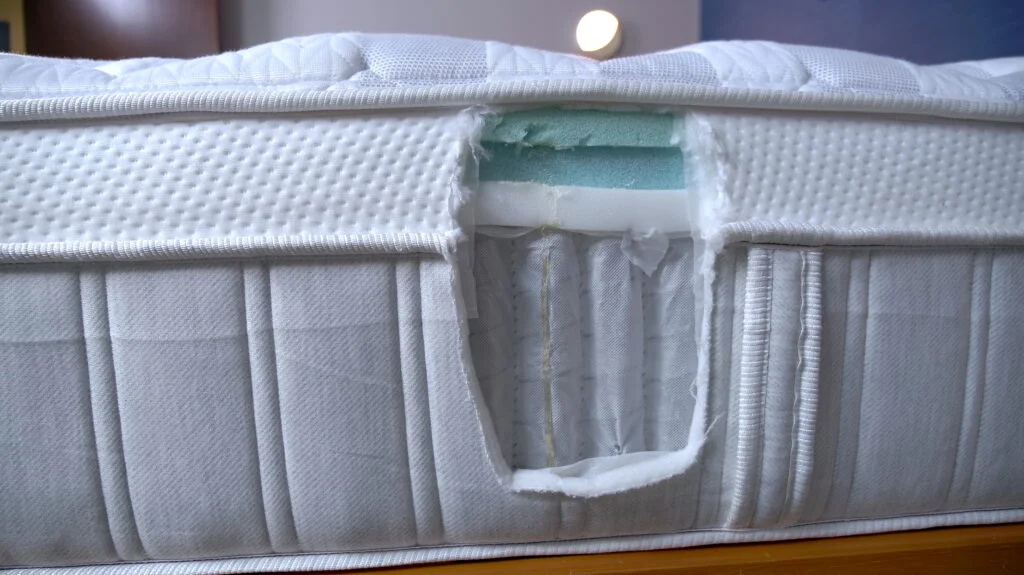
The Leesa Sapira Chill also thrived during our cooling tests and could be an excellent choice for anyone prone to overheating. Our tester Riley Otis used a thermal gun to record the Sapira Chill’s temperature before and after lying on it for 5 minutes. The bed’s temperature went from 68.1 degrees to 73.1 degrees — only a 5-degree increase, which we consider excellent cooling. We gave it a score of 4.5 out of 5 in this category. “The cover has a cool-to-the-touch feel that remained present the entire time I was lying on it,” Riley said. “I didn’t notice the bed heating up at all beneath me, and I honestly think its name is pretty accurate — chill.”
If you sleep with a partner, you should take note of this bed’s lackluster motion isolation score — it only earned 3 stars. Riley tested motion isolation by lying on the bed wearing a blindfold while another tester switched positions next to her. She could feel a lot of movement coming from her partner and felt like she was being jostled around. Since the disturbance was so large, we wouldn’t recommend this bed to couples, especially if one or both partners is a very light sleeper.
For a closer look at this bed, read our full Leesa Sapira Chill Hybrid mattress review. For a cooling bed with better motion isolation, I recommend the Nolah Evolution mattress.
Leesa Sapira Chill Sleepopolis Scores
| Test | Product Score | Average Score |
| Firmness | 6 | 6.7 |
| Pressure Relief Side | 4.7 | 3.5 |
| Back Pressure Relief | 4.3 | 4 |
| Motion Isolation | 3 | 4 |
| Responsiveness | 2 | 4.1 |
| Cooling | 4.5 | 3.9 |
| Edge Support | 3.4 | 4 |
| Bounce Height | 16 inches | 16.3 inches |
| Bounce Rating | High | Moderate |
| Sinkage | Moderate | Moderate |
| Sex Score | 3.3 | TBD |
| Noise | 5 | 4.5 |
| Off-Gassing | N/A | 4.2 |
| Trial Period | 3.5 | 4.2 |
| Warranty | 4.5 | 4.6 |
| Full Rise | N/A | 4.7 |
| Unboxing/Moving | N/A | 4.4 |
WinkBed – Best Mattress for Back Pain
The WinkBed is a luxury hybrid mattress. It has a similarly supportive and sturdy feel to a traditional innerspring mattress, but upgrades like a Euro top and cooling Tencel cover give it a touch of modern luxury. Available in three firmness levels, there is a WinkBed for just about every sleeper. And a responsive and bouncy feel makes it a great pick for combination sleepers. Learn more in our video review.
What our tester says:
“If you like the feel of a traditional innerspring mattress, the WinkBed could work for you. Since this bed offered great pressure relief around my lumbar region, I’d also recommend it to folks who suffer from lower back pain.” – Nichole Mondshein, lead reviewer and staff writer
Sleeping can be a real pain in the back for some people. Luckily, Sleepopolis Chief Medical Product Tester Dr. Tedesco says that a suitable mattress can help ease back pain by providing even support across the entire body while relieving pressure at the lower back and pelvis. No matter your sleeping position, if you have back pain, you need a mattress that supports a healthy spinal alignment. In our testing, we found the WinkBed delivers a very balanced feel for all positions, due in part to its hybrid construction. When all of the quantitative and subjective scores were tallied, the WinkBed earned 4.2 out of 5 stars overall and was my clear choice for best mattress for back pain.
We invited Dr. Tedesco into our studio to evaluate the WinkBed in the Luxury Firm model from a medical perspective. He rated this mattress 4.5 stars for its ability to relieve back discomfort. “If you’re a back or side sleeper, you’ll feel even support across your entire body,” he said. “If you’re a stomach sleeper, I still think you’ll get enough support to prevent significant back pain.”
When our team of expert testers tried the WinkBed, they felt the most pressure relief while back sleeping, giving this position an average score of 4.3 stars. I don’t ever sleep on my back, but I really enjoyed this position on the WinkBed. It’s firm, yet still provides contouring at my lower back, which is an area that sometimes causes issues for me.
Motion Isolation: 4.3/5

Cooling: 3.5/5
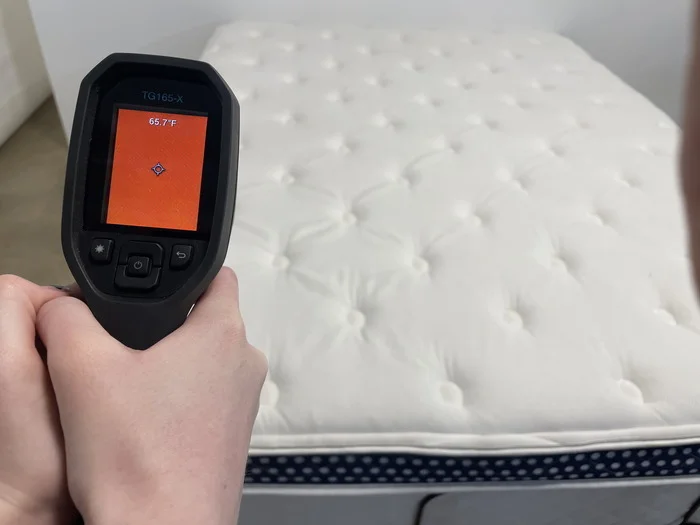
Responsiveness: 3/5
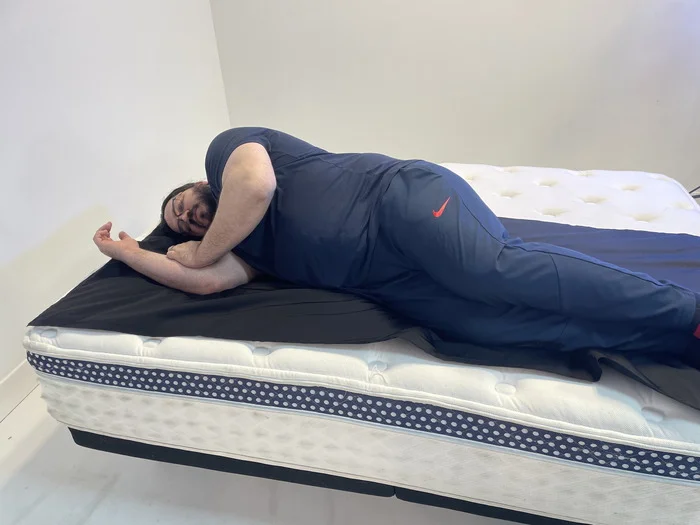
Pressure Relief: 4.4/5
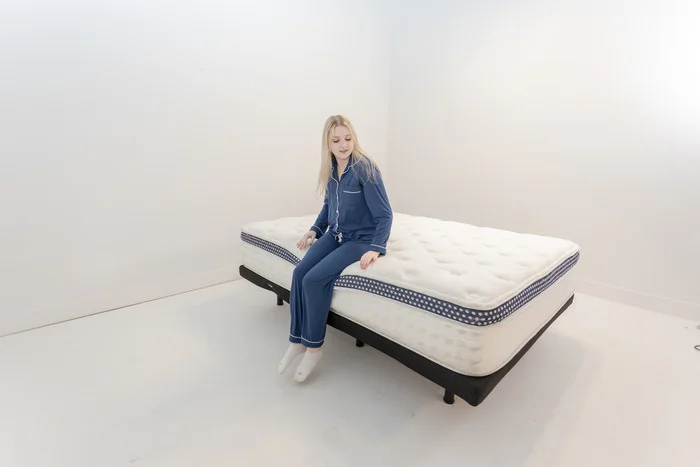
Pressure Relief: 3.8/5
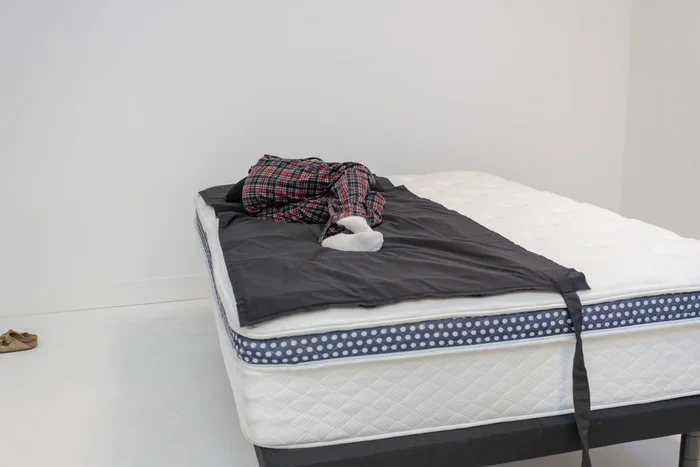
Firmness: 6.5/10
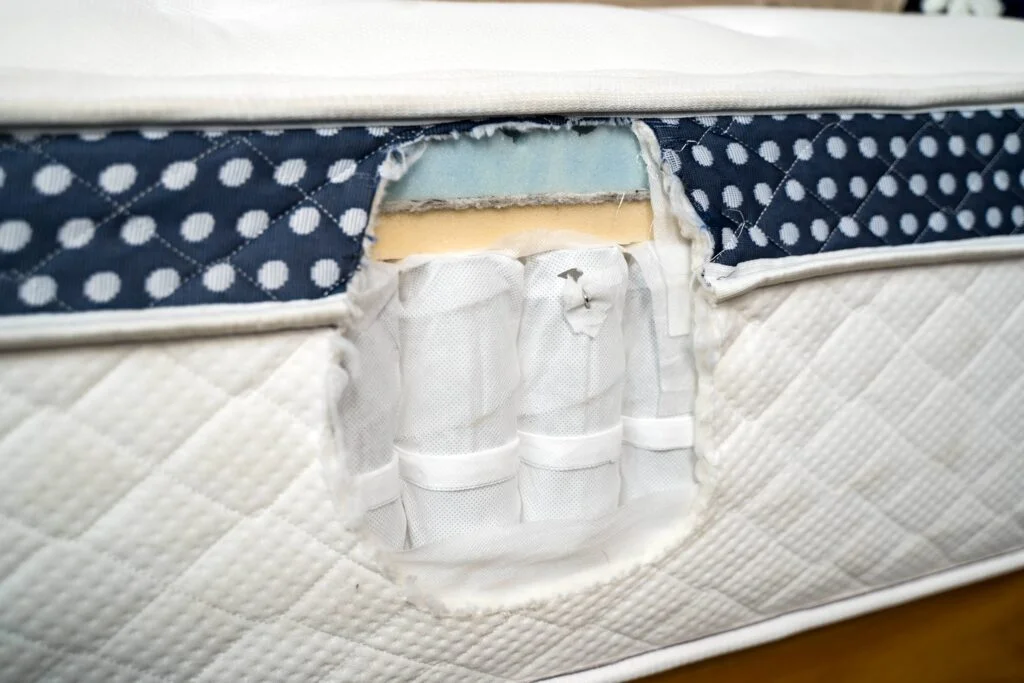
I also like this mattress for side sleepers, although they should be aware of its firmer feel that may cause pressure buildup for lightweight sleepers. When our lightweight tester Riley Otis tried this bed on her side, she said, “The pillow top shines in this position, providing nice cushioning at the hips and just a bit of sinkage. I did feel a bit of pressure starting to form on my shoulders after a while, so people with sensitive joints may want the Softer model.” In terms of spinal alignment, Riley felt her hips were propped in line with her shoulders and had good overall weight distribution.
As a sturdy hybrid mattress, this bed doesn’t provide the slow-moving sinkage from traditional memory foam mattresses. Anyone looking for a bed that wraps you in a deep embrace might want to check out our best memory foam mattresses. Additionally, heavy sleepers may find this bed a bit too soft, even if the Firmer model.
You can learn more about how this mattress performed on our tests in our in-depth WinkBeds mattress review. Sleepers more than 230 pounds should check out the WinkBed Plus, a model designed specifically for these folk.
WinkBed Sleepopolis Scores
| Test | Product Score | Average Score |
| Firmness | 6.5 | 6.7 |
| Pressure Relief Side | 3.3 | 3.5 |
| Back Pressure Relief | 4.3 | 4 |
| Motion Isolation | 4.3 | 4 |
| Responsiveness | 3 | 4.1 |
| Cooling | 4 | 3.9 |
| Edge Support | 4.4 | 4 |
| Bounce Height | 17.5 inches | 16.3 inches |
| Bounce Rating | High | Moderate |
| Sinkage | Deep | Moderate |
| Sex Score | 3.8 | TBD |
| Noise | 4 | 4.5 |
| Off-Gassing | N/A | 4.2 |
| Trial Period | 4 | 4.2 |
| Warranty | 5 | 4.6 |
| Full Rise | N/A | 4.7 |
| Unboxing/Moving | N/A | 4.4 |
Saatva Classic – Best Cooling Mattress
The Saatva’s coil-on-coil construction provides a classic innerspring feel. It’s a good option for combo sleepers, who will want to feel free to switch positions and avoid feeling “stuck” in the mattress. It comes in three firmness levels, so you should be able to find one that suits your needs. The white glove delivery Saatva provides is an added perk and will save you the headache of getting rid of your old mattress (they take it away for free!). For more information, watch our video review.
What our tester says:
“The Saatva Classic’s springy surface is perfect for combination sleepers looking for ease of movement as they toss and turn throughout the night. Also, back sleepers are perhaps best suited to the bed’s lifted support and balanced cushioning from the pillow top.” – Livvi DiCicco, staff writer and certified sleep science coach
If you frequently wake up in the middle of night in a pool of your own sweat, it may be time to seek a mattress designed for hot sleepers. These mattresses typically contain a layer of innerspring coils that helps prevent heat buildup and promotes airflow. They also have other cooling features, such as breathable covers and cooling foam infusions. Well, the Saatva Classic mattress has a whopping two coil units, an organic cotton cover, and a layer of gel-infused foam right at the surface. With all this in mind, it’s no surprise that it earned a 4 out of 5 in our cooling tests. More than that, a few of my colleagues own this bed, so they can attest to sleeping cool every night.
At Sleepopolis, to evaluate cooling in a mattress, one of our testers records the initial surface temperature with a thermal gun, and then again after resting on the bed for about 5 minutes. My fellow tester Kenny Timper was the lucky guy for Saatva’s test. He found only a 7.2-degree increase in temperature, which is a sign of fairly good temperature regulation. Of his experience on the mattress, Kenny said, “I didn’t think it was noticeable when it heated up.” But after standing up, he did feel some warmth left behind where his body had been. Tester and staff writer Livvi DiCicco owns a Saatva Classic and had this to say about cooling: “I don’t think the Saatva Classic is as cool-to-the-touch as other beds, but in the odd times I’ve napped on the bare surface while my sheets are in the wash (you can judge me), I never felt like I was poised to overheat.”
Motion Isolation: 2.8/5
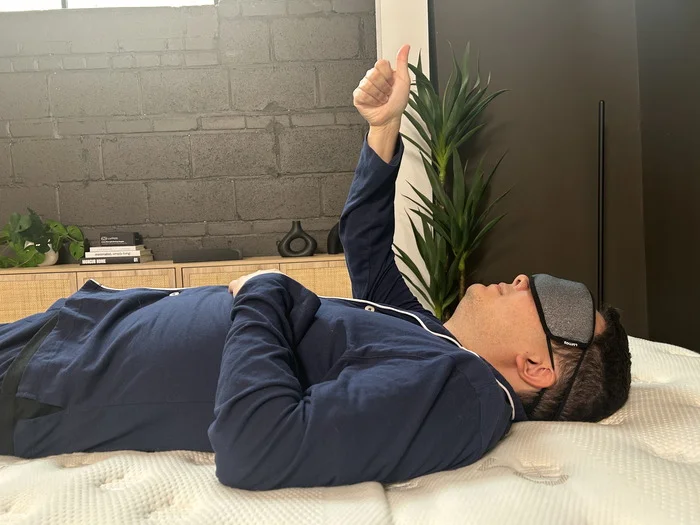
Cooling: 4/5
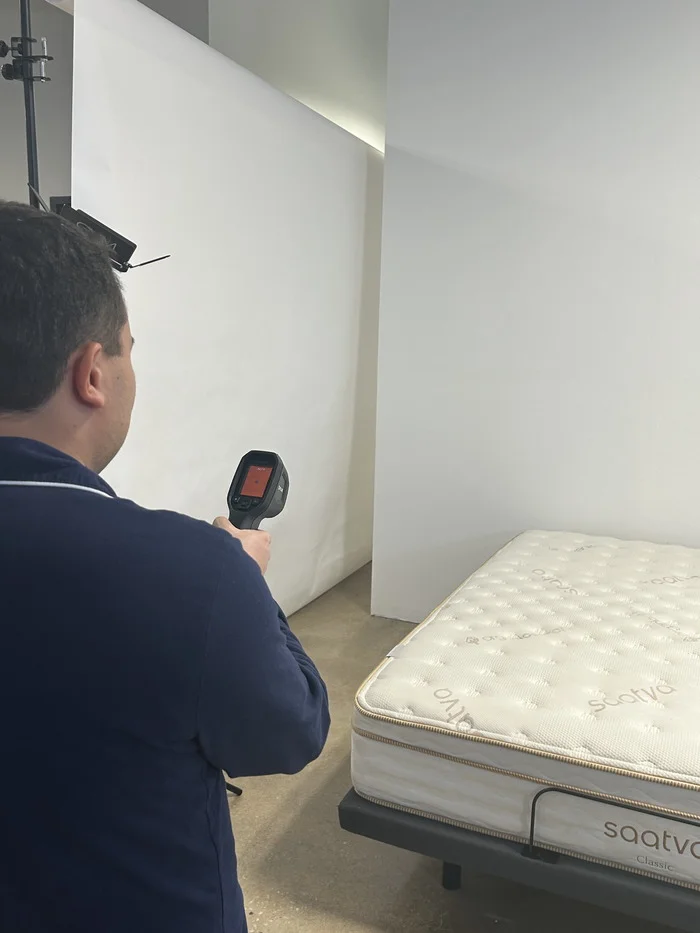
Responsiveness: 5/5

Edge Support: 5/5
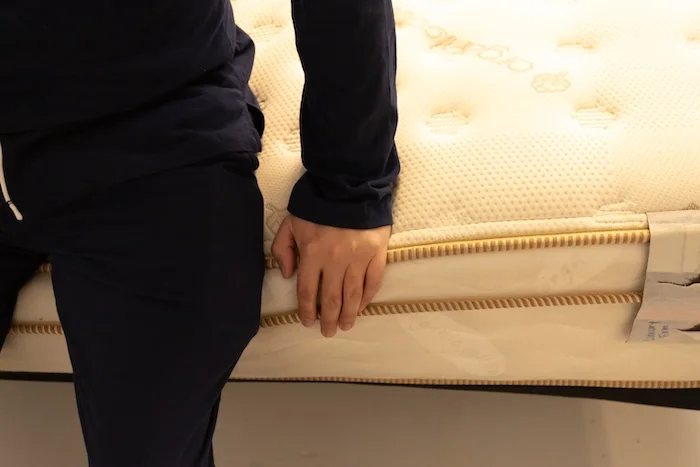
Pressure Relief: 4/5
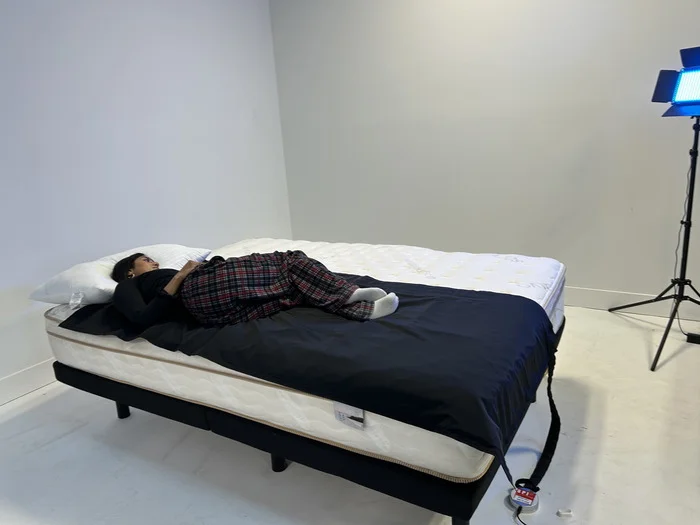
Firmness: 7.5/10
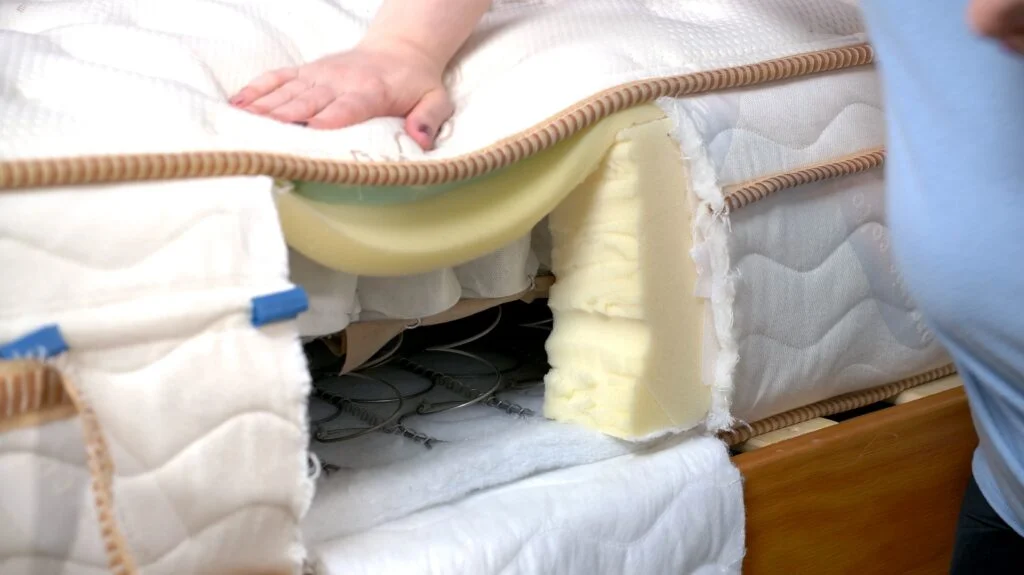
A favorite feature of the Saatva mattress is its bounce. The two innerspring units are working for their paycheck here, as it’s easy to launch yourself across the surface despite the contours of the bed’s comfy pillow top. Kenny agreed and gave the bed a perfect 5-out-of-5 rating for responsiveness. “On the Saatva, I’m never caught feeling ‘stuck,’” he said. Livvi, a combination sleeper, added, “I switch between every sleeping position and make up new ones, and I change between them without any issues.”
Our testing also found that the Saatva Classic has stellar edge support, earning another perfect score in this category. When you sit or lie down at the perimeter of a bed, you might notice some sinkage underneath your weight, but that isn’t the case here. As Kenny tested this out in the studio, he said, “I don’t think it really budged when I sat on it, pressed down, and stood up.” Livvi corroborated his results saying, “I’m often sleeping with one leg off the bed on my Saatva, and even after six months of use, it hasn’t started sagging on me yet!”
When it came to pressure relief, the Saatva Classic again garnered some respectable scores. As we had testers of different weights lie down on the bed, we recorded where pressure built up on their bodies with a specialized mat. Most complaints came during the side-sleeping trials, where the bed scored a lower 3.7 out of 5 for pressure relief in this position. “I feel a lot of pressure in my shoulder and upper back,” our lightweight sleeper said in this position. But when it came to back sleeping, our average and heavyweight testers both enjoyed the Saatva. “I can feel the relief in my lower back and my spine feels really aligned,” our average-weight tester praised. Pressure relief for back sleepers came out to a more appealing 4-out-of-5 score.
Where the Saatva really drops the ball, though, is motion isolation. This refers to whether or not you can feel your partner’s movements from the other side of the bed — an important factor for couples and light sleepers. To evaluate this, one tester moves around on a mattress while the other lies still wearing a blindfold, trying to judge how much motion they can feel. Kenny performed this test with Livvi, and he was not impressed. “I can feel every little thing Livvi did and could tell exactly what she was doing despite being blindfolded, which is definitely not amazing for motion isolation at all,” he said bluntly. Livvi agreed, as this is the only complaint she has for her Saatva at home and the reason she refuses to let her friends sleep over on it.
Want a bed with better motion isolation? Check out the Bear Elite Hybrid. Or you can read more in our full Saatva Classic mattress review.
Saatva Sleepopolis Scores
| Test | Product Score | Average Score |
| Firmness | 7.5 | 6.7 |
| Pressure Relief Side | 3.7 | 3.5 |
| Back Pressure Relief | 4 | 4 |
| Motion Isolation | 2.8 | 4 |
| Responsiveness | 5 | 4.1 |
| Cooling | 4 | 3.9 |
| Edge Support | 5 | 4 |
| Bounce Height | 33 inches | 16.3 inches |
| Bounce Rating | 5 | 4.2 |
| Sinkage | 4.5 | 4.7 |
| Sex Score | 5 | TBD |
| Noise | 5 | 4.5 |
| Off-Gassing | Coming Soon | 4.2 |
| Trial Period | 5 | 4.2 |
| Warranty | 5 | 4.6 |
| Full Rise | Coming Soon | 4.7 |
| Unboxing/Moving | Coming Soon | 4.4 |
Silk & Snow Hybrid – Best Value Mattress
As an affordable option with a medium-firm feel, we think that the Silk & Snow Hybrid should appeal to a wide variety of sleepers, including back sleepers, side sleepers, hot sleepers, and budget shoppers. Learn more in our full video review, where we compare the Silk & Snow Hybrid to the original Silk & Snow, which doesn’t have coils.
What our tester says:
“The Silk & Snow Hybrid is a great middle ground firmness for those who don’t want an ultra-firm bed, but also want to feel well-supported.” – Amelia Jerden, senior staff writer
We chose the Silk & Snow as the best value mattress because it’s made with high-quality materials, has excellent cooling abilities and airflow, and is compatible with a variety of sleeping positions and body types. All of these factors are impressive on their own, but the Silk & Snow Hybrid is even more appealing when you look at its price tag, which is around $650 to $950 for a queen size. For context, similar mattresses on the market cost almost $2,000, so this is a great mattress for the money. When we combined all our testing scores, this bed earned 4.4 out of 5 stars overall.
When Dr. Tedesco tried this mattress in our studio, he felt great support in the back-sleeping position. “You get a little posterior pelvic tilt on this bed, which makes it feel like your knees are bent and your legs are slightly elevated,” he said. “You’ll sink in a little more in your shoulder area, which puts your humerus in a great position because it becomes a little elevated.” Based on his assessment, he thinks people with back pain or anterior shoulder pain (bicep tendonitis, dislocated shoulders, labrum surgeries, etc) can find great pressure relief.
Motion Isolation: 4.7/5
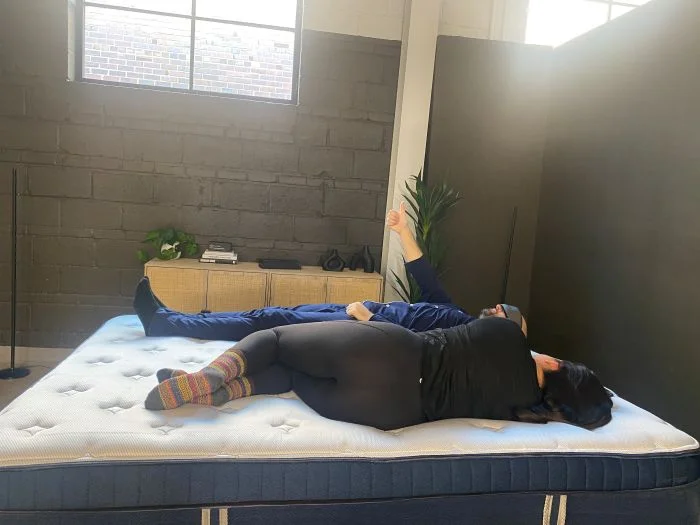
Cooling: 4.5/5

Responsiveness: 4/5
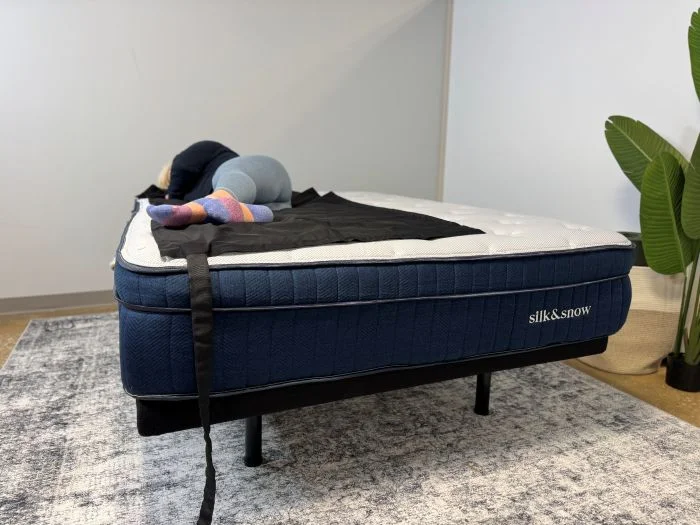
Edge Support: 3.6/5
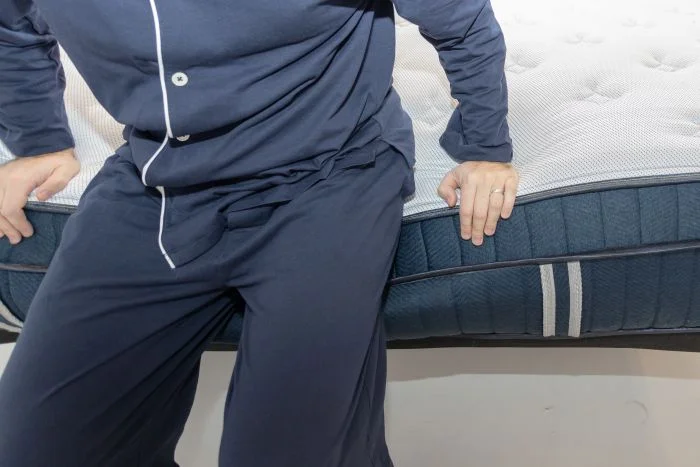
Pressure Relief: 3.9/5

Firmness: 6.5/10
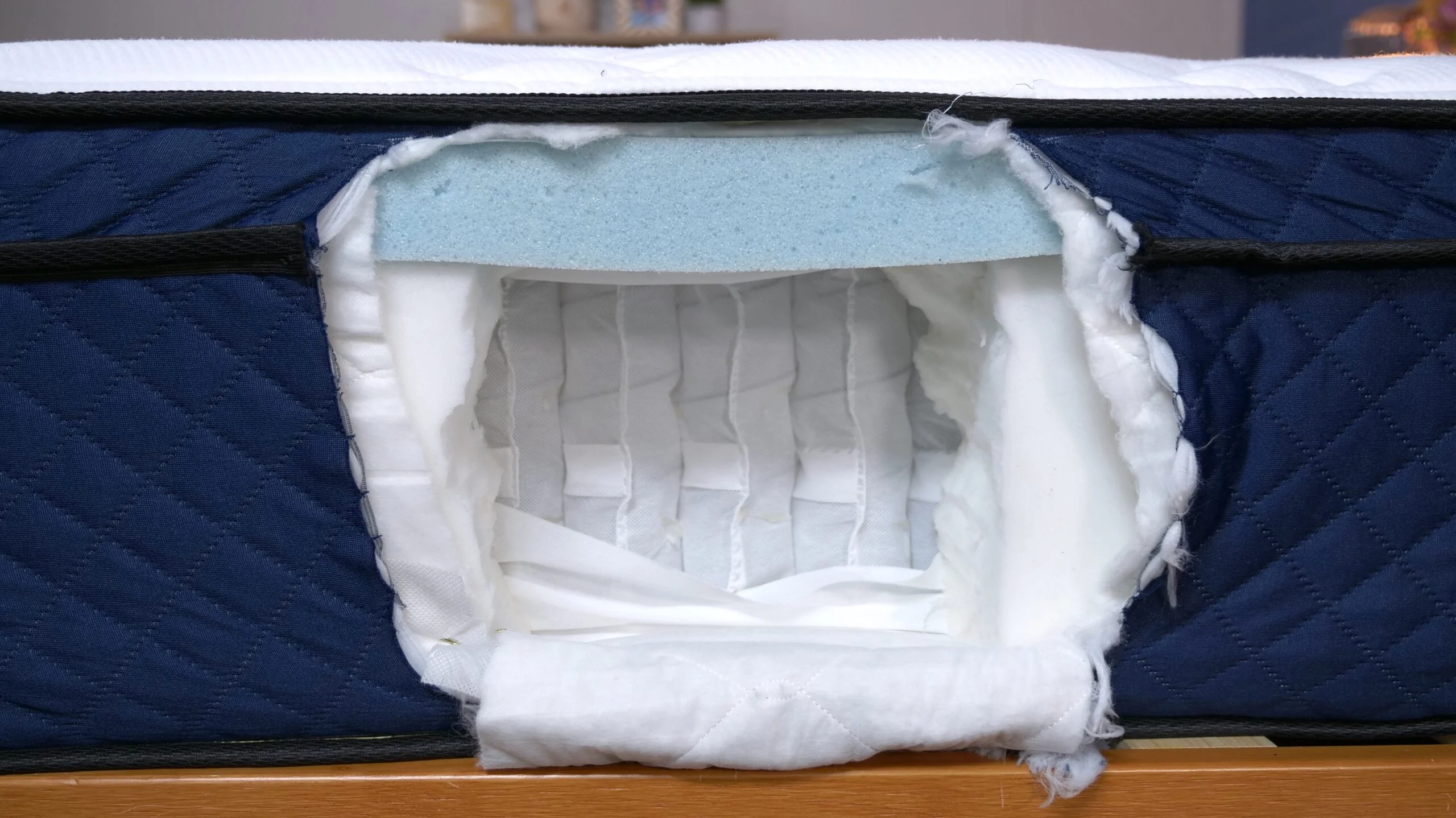
During testing, we were especially impressed with the Silk & Snow Hybrid’s ability to absorb motion at the source and prevent it from traveling across the bed. This can appeal to couples, as it ensures you won’t feel your partner tossing and turning next to you. Testers Dan Caffrey and Kate Meier took turns lying on the bed while the other switched sleeping positions beside them.
“I could feel a little bit of movement when my colleague Kate, who has a medium body type, got in and out of bed, and once when she switched sleeping positions,” Dan said. “But the vibrations were still very low, and I don’t think you’re likely to feel your partner tossing and turning unless you’re an especially light sleeper.” They ended up rating this test 4.7 stars.
This mattress is also a nice choice for hot sleepers, as it earned 4.5 stars on our cooling test. Dan used a thermal gun to measure the bed’s temperature before and after he spent 5 minutes lying on it. The temperature went from 66 degrees to 70.1 degrees, a 4.1-degree increase. We classify this as excellent cooling abilities, so you should be able to sleep at a neutral temperature without overheating.
One testing area where the Silk & Snow Hybrid could improve is edge support. We only awarded 3.6 stars to the edge support because the layers collapsed quite a bit when weight was applied to one area. While they aren’t the weakest edges we’ve ever seen, people with mobility issues may struggle to get in and out of bed, as they can’t rely on the edge for support. We also think this bed is just a touch too soft to keep stomach sleepers’ hips in line with their shoulders.
If you’d like to learn more about how this bed performed in testing, check out our Silk & Snow Hybrid Mattress review. If edge support is important to you, I recommend the Nectar Hybrid. Its coils give the bed a sturdy perimeter and should result in a comfortable sleeping experience.
Silk & Snow Hybrid Sleepopolis Scores
| Test | Product Score | Average Score |
| Firmness | 6.5 | 6.7 |
| Pressure Relief Side | 3.7 | 3.5 |
| Back Pressure Relief | 4 | 4 |
| Motion Isolation | 4.7 | 4 |
| Responsiveness | 4 | 4.1 |
| Cooling | 4.5 | 3.9 |
| Edge Support | 3.6 | 4 |
| Bounce Height | 10 inches | 16.3 inches |
| Bounce Rating | Moderate | Moderate |
| Sinkage | 4.2 | 3.7 |
| Sex Score | 4 | TBD |
| Noise | 5 | 4.5 |
| Off-Gassing | Coming Soon | 4.2 |
| Trial Period | 5 | 4.2 |
| Warranty | 4 | 4.6 |
| Full Rise | Coming Soon | 4.7 |
| Unboxing/Moving | Coming Soon | 4.4 |
Brooklyn Bedding Aurora Luxe – Best Mattress for Back Sleepers
The Brookyn Bedding Aurora Luxe mattress is one of Brooklyn Bedding’s more high-end mattresses. It has a ton of cooling features in it that can help hot sleepers sleep cool all night. It’s also available in three different firmnesses, so it can accommodate a variety of sleeping positions and body types. For more information, check out our video review.
What our tester says:
“Back sleepers should find enough support to promote proper spinal alignment while also getting a bit of cushioning at the lumbar region. And the cooling, motion isolation, edge support, and responsiveness scores indicate the Aurora Luxe is a great match for couples.” – Riley Otis, staff writer and certified sleep science coach
When it comes to back sleeping, finding a mattress that balances support and pressure relief is crucial. In this position, we want enough support to lift the spine into a straight line while also having enough cushioning at the lumbar region to prevent back pain. We chose the Brooklyn Bedding Aurora Luxe as the best mattress for back sleepers because its three layers of foam and supportive coil layer create a firm feel that lifts the hips in line with the shoulders while still contouring the lumbar region. When we combine all our testing scores, this mattress has an exceptional overall score of 4.9 out of 5 stars.
The main support system in the Aurora Luxe is an 8-inch layer of individually wrapped coils. These sturdy coils help prevent the sleeper from sinking too far into the mattress’s layers and stop them from “bottoming out.” In the back-sleeping position, the bed props the hips in line with the shoulders, placing the spine in a straight line. While the support is strong, the bed still contains three soft layers of foam that provide additional lumbar support.
When our chief medical product tester, Dr. Joe Tedesco, tried this mattress on his back, he said, “My thoracic and lumbar spines are very neutral — there isn’t a lot of flexion or extension, and no significant ‘falling’ feeling. That neutral anatomical position is good for people who have back pain anywhere in the back.”
Motion Isolation: 4.7/5
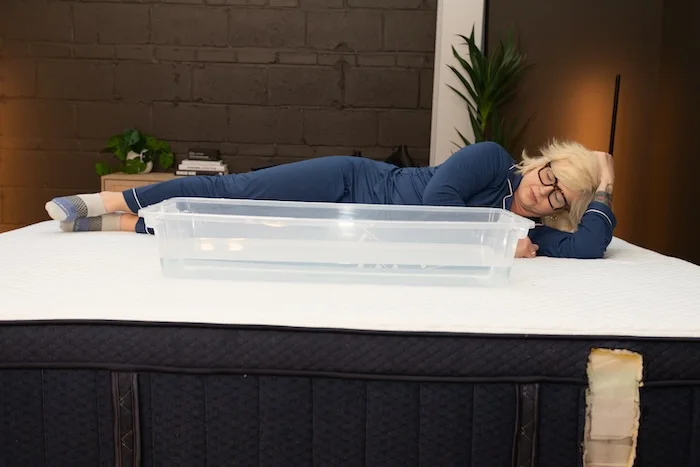
Cooling: 5/5
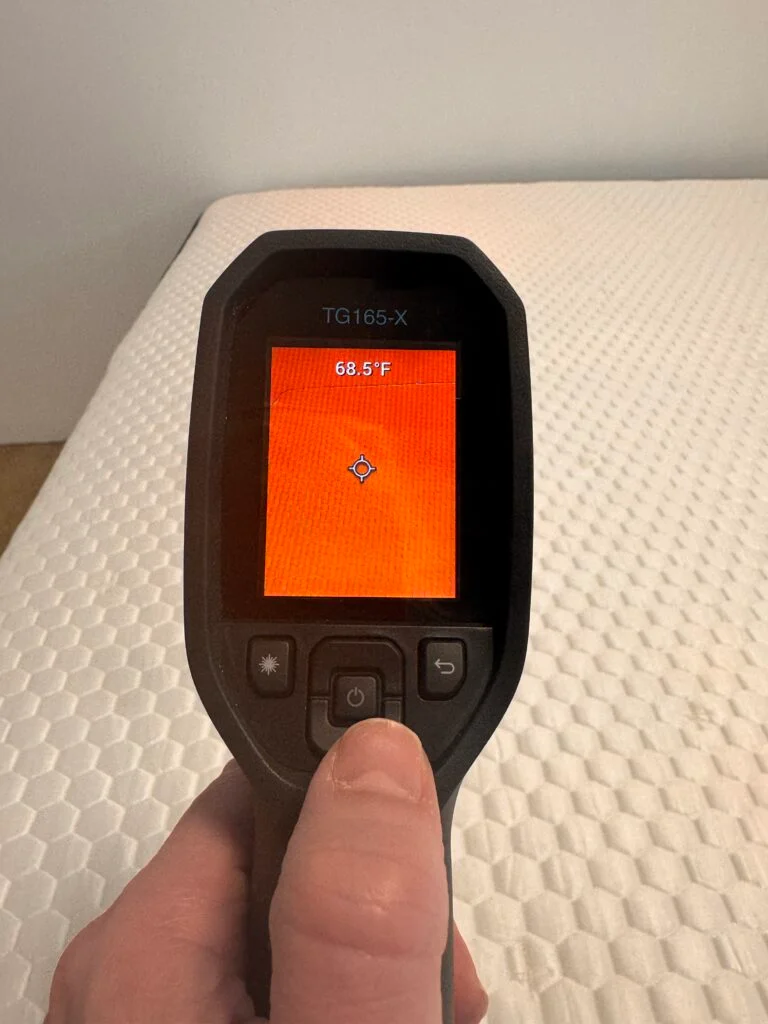
Responsiveness: 5/5
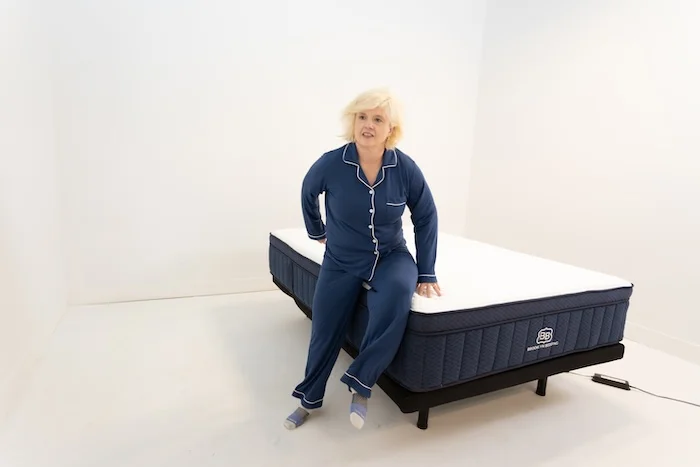
Edge Support: 4.4/5
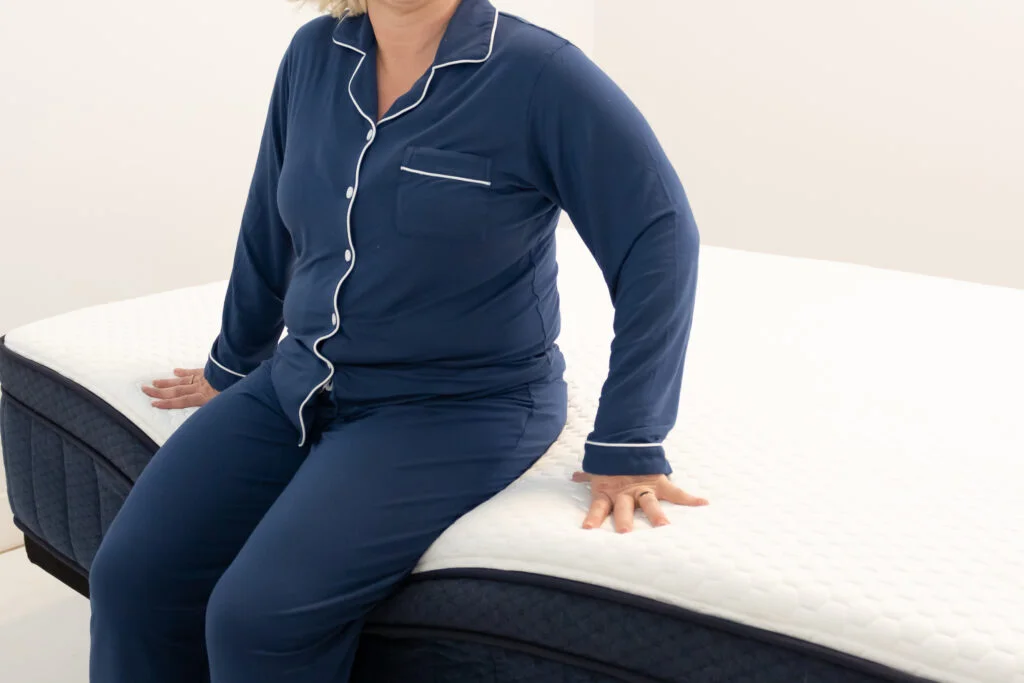
Pressure Relief: 4.2/5
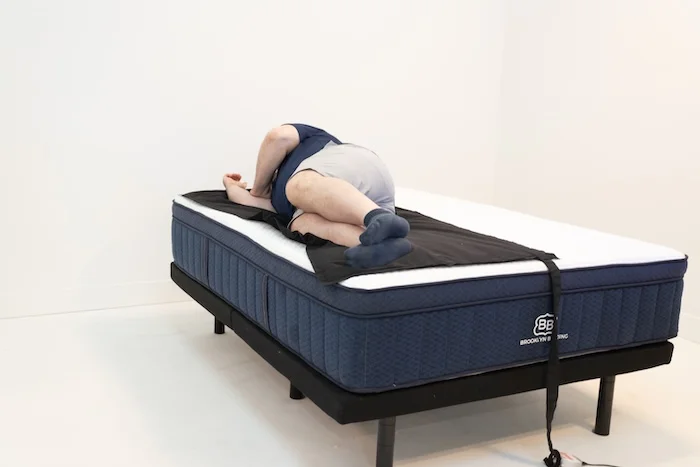
Firmness: 7.5/10
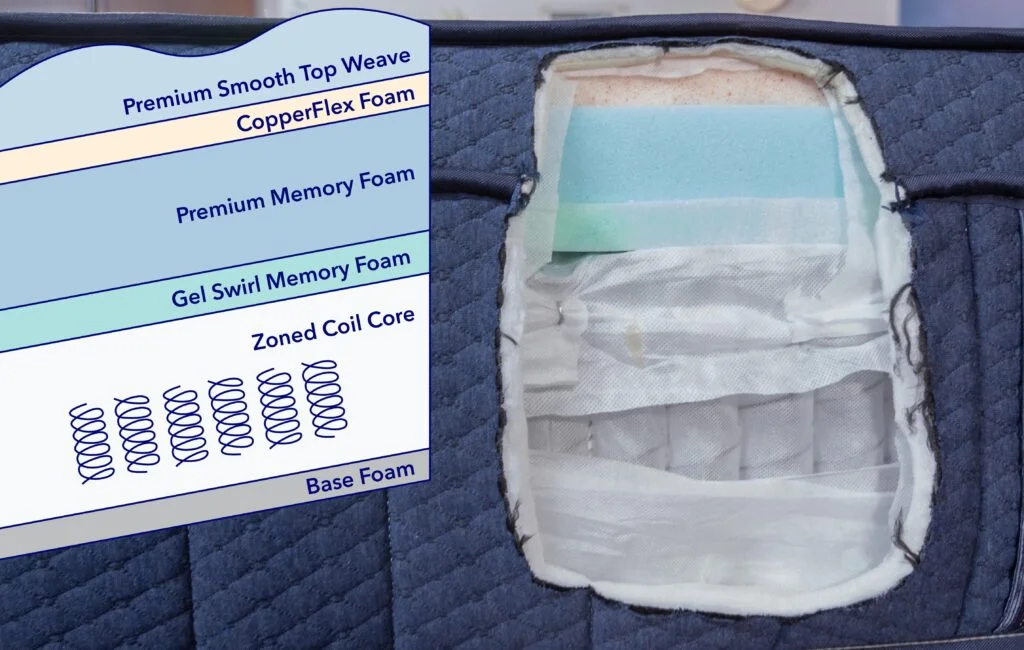
Another area the Aurora Luxe excels is cooling. We tested cooling using a thermal gun to measure the mattress’s temperature before and after someone has lain on it for 5 minutes. Our results showed that the temperature only increased by 4 degrees, which tells us the bed is doing a fantastic job of regulating temperature and preventing heat from getting trapped, so we gave it 5 stars for cooling.
Our tester Sosha Lewis also found some strong edge support on this mattress and awarded it 4.4 stars in this category. When the edges are secure like these, you’re able to fully spread out and sleep right up to the edge without feeling like you’re about to fall. This is especially important for older adults and folks with mobility issues, as it allows them to rely on the side of the bed when getting in and out.
If you’re seeking a soft, doughy feel typically associated with memory foam mattresses, you may not enjoy the Aurora Luxe. You’ll likely feel more “on” the bed than “in” the bed due to the firm, supportive feel. I also don’t recommend pairing this mattress with an adjustable base. Since it’s a firm, hybrid bed, it struggled to properly bend and conform to the base when the head and legs were elevated. For more information on this bed, read our full Brooklyn Bedding Aurora Luxe mattress review. For a softer bed for back sleepers, try the Leesa Sapira Chill mattress.
Brooklyn Bedding Aurora Luxe Sleepopolis Scores
| Test | Product Score | Average Score |
| Firmness | 7.5 | 6.7 |
| Pressure Relief Side | 3.7 | 3.5 |
| Back Pressure Relief | 4.7 | 4 |
| Motion Isolation | 4.7 | 4 |
| Responsiveness | 5 | 4.1 |
| Cooling | 5 | 3.9 |
| Edge Support | 4.4 | 4 |
| Bounce Height | 16 inches | 16.3 inches |
| Bounce Rating | High | Moderate |
| Sinkage | Light | Moderate |
| Sex Score | 4.8 | TBD |
| Noise | 3 | 4.5 |
| Off-Gassing | N/A | 4.2 |
| Trial Period | 4 | 4.2 |
| Warranty | 4.5 | 4.6 |
| Full Rise | N/A | 4.7 |
| Unboxing/Moving | N/A | 4.4 |
Bear Elite Hybrid – Best Luxury Mattress
The Bear Elite Hybrid uses foam and coils for a mix of support, cushioning, and cooling. While designed for athletes prioritizing wellness and recovery, sleepers of all activity levels can enjoy the many luxurious features. Enjoy zoned support for targeted relief, an “on top of” feel allowing for ease of movement, and cooling features throughout. For more information, watch our video review.
What our tester says:
“I’d recommend the Bear Elite Hybrid for most back and stomach sleepers.I think these sleepers will get the needed pressure relief and contouring around the lower back and hips. This mattress does a wonderful job at offering body contouring while still helping the sleeper stay elevated and lifted as well. The layers of foam should provide comfort while the coil system should offer lots of support.” – Kenny Timper, lead reviewer and certified sleep science coach
If you’re looking for a highly luxurious mattress that’s still fairly affordable, we recommend the Bear Elite Hybrid. This bed includes luxury features such as a hand-quilted cover, copper-infused memory foam for cooling, and edge-to-edge coils for stronger edge support. The mattress is also offered in three firmness levels — Soft, Medium, and Firm — so you can choose the feel you prefer. We tested the firmness model in our studio and rated it 4.6 out of 5 stars overall.
As a hybrid mattress, the Bear Elite Hybrid has a combination of foam and coils, which provides a blend of both support and pressure relief. We rated it a 7 out of 10 on our mattress firmness scale — just a touch firmer than medium firm. I found it especially comfortable while resting on my side and back, although it definitely has a more “on-top-of” feeling, which is typical of hybrid mattresses because of the springs. If you want something with more sinkage and contouring, I’d opt for the Soft model.
For those who struggle with chronic aches, Dr. Tedesco believes this bed could provide relief in the side-sleeping position. “I think this mattress is best for side sleepers because of the contoured support you’ll get in that position,” he said. “This could be beneficial for those with shoulder, hip, or back pain.”
Motion Isolation: 4.7/5
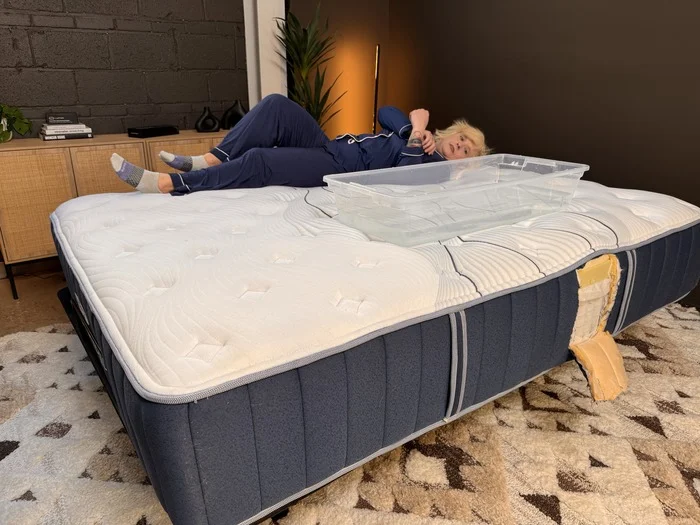
Cooling: 4.5/5
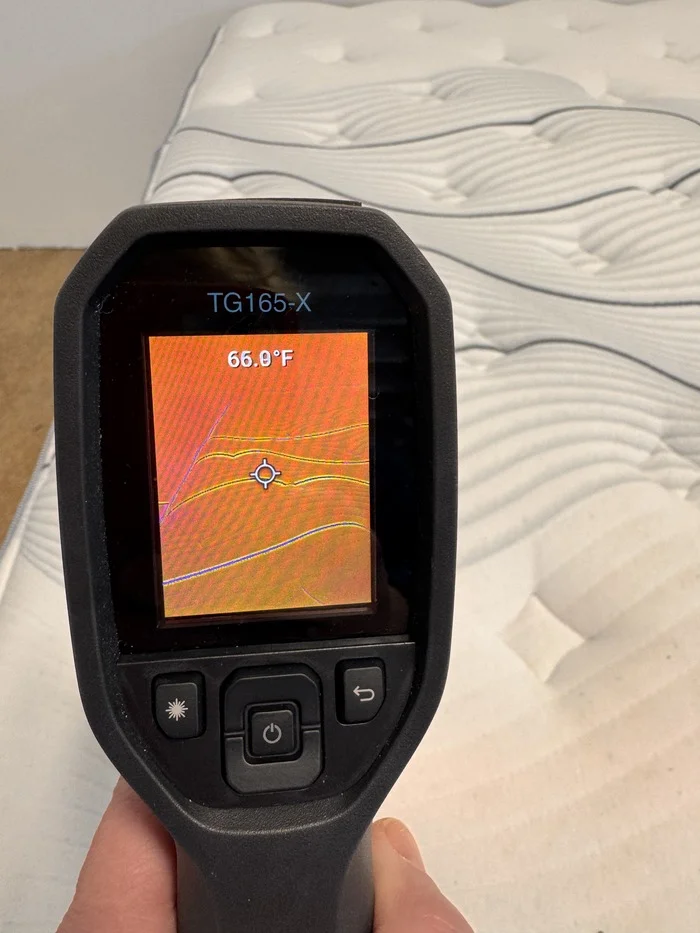
Responsiveness: 4/5
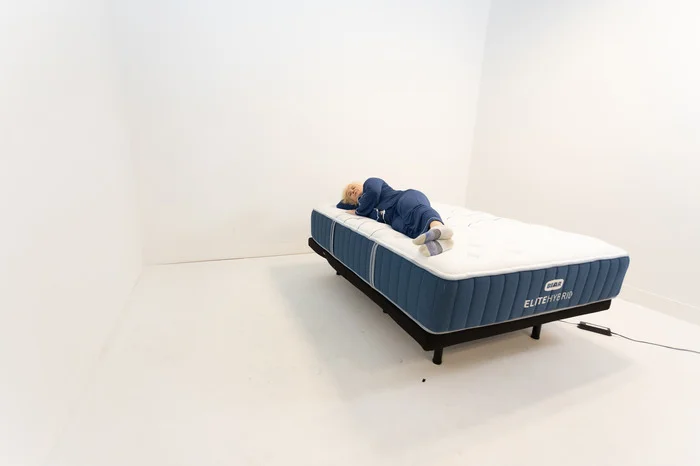
Edge Support: 4.5/5
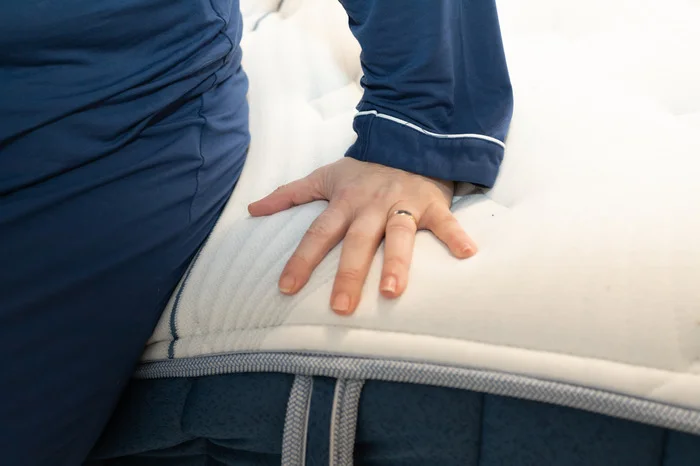
Pressure Relief: 3.9/5
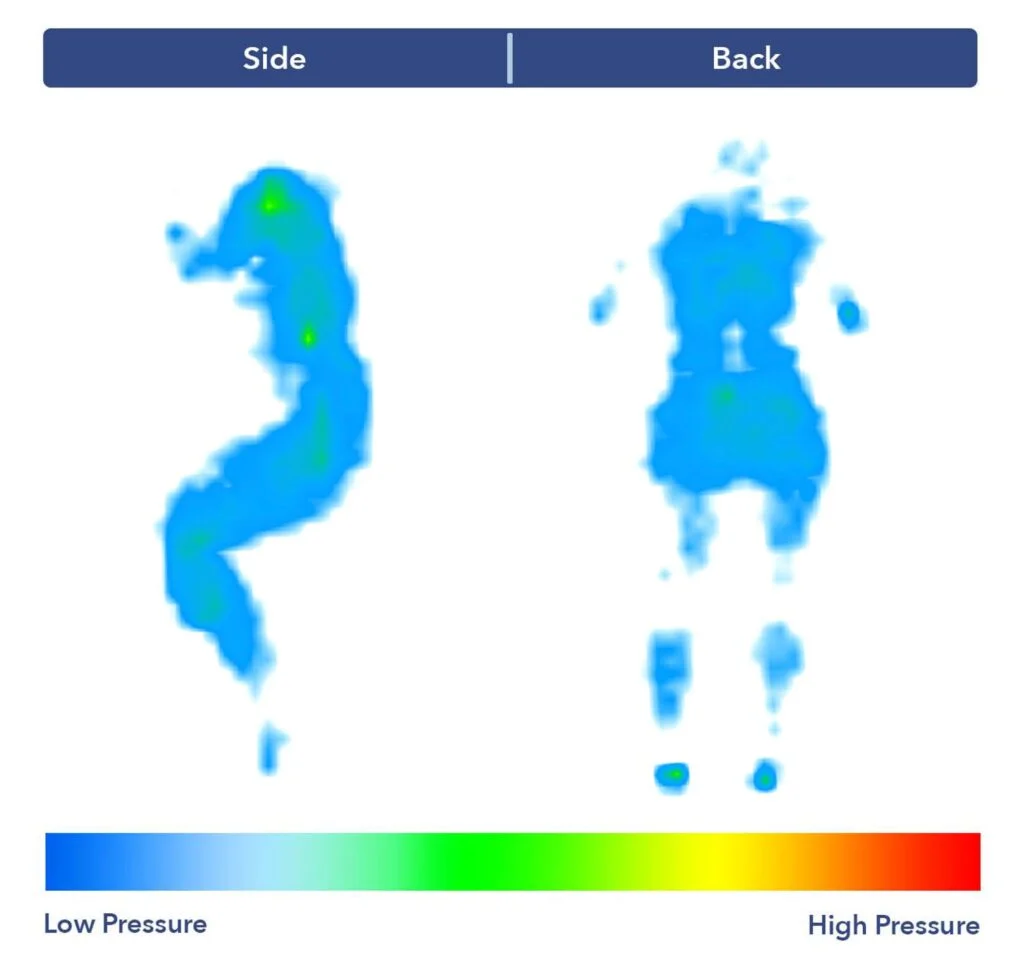
Firmness: 7/10

I also found stellar motion isolation on the Elite Hybrid, making it a good choice for anyone who sleeps with a partner or pet. I tested motion transfer by placing a tub of water on one side of the bed and then switching sleeping positions on the other side. The water provides a visual representation of how my movement affects the person sleeping beside me. There was only the slightest rippling of water inside the tub, even when I bounced on the bed a bit. This indicates that foam layers absorbed my motion on impact and prevented it from traveling across the mattress. I gave the bed 4.7 stars overall, because I think you’re unlikely to experience frequent sleep disturbance due to a restless partner.
Before you purchase this bed, you should know we don’t recommend the Medium model to strict stomach sleepers. These sleepers need a tad more support at their hips to prevent lower back pain, so they’re better suited to the Firm model. We also didn’t find this bed supportive enough for sleepers more than 230 pounds, who need a firmer bed with more lift.
ou can read more about this mattress and sleeping positions in our Bear Elite Hybrid mattress review. If you’re looking for one of the best mattresses for stomach sleepers or heavy people, I recommend checking out the Titan Plus Core from Brooklyn Bedding.
Bear Elite Hybrid Sleepopolis Scores
| Test | Product Score | Average Score |
| Firmness | 7 | 6.7 |
| Pressure Relief Side | 3.7 | 3.5 |
| Back Pressure Relief | 4 | 4 |
| Motion Isolation | 4.7 | 4 |
| Responsiveness | 4 | 4.1 |
| Cooling | 4.5 | 3.9 |
| Edge Support | 4.5 | 4 |
| Bounce Height | 13 inches | 16.3 inches |
| Bounce Rating | 5 | 4.2 |
| Sinkage | 5 | 4.7 |
| Sex Score | 5 | TBD |
| Noise | 5 | 4.5 |
| Off-Gassing | 5 | 4.2 |
| Trial Period | 4 | 4.2 |
| Warranty | 5 | 4.6 |
| Full Rise | 5 | 4.7 |
| Unboxing/Moving | 4 | 4.4 |
Nolah Evolution – Best Hybrid Mattress
The Nolah Evolution’s hybrid construction offers the cushioning of memory foam with the responsiveness of coils. The Luxury Firm model is a good option for side and back sleepers, though there are Plush and Firm versions as well. Those who share a bed may also appreciate its low motion transfer, so you won’t be disturbed by a partner’s movements and its solid edge support to allow you to maximize surface area. For more information, check out our video review.
What our tester says:
“There’s enough cushioning for side sleepers to prevent pressure from building at the hips and shoulders. The mattress also scored highly in motion isolation, edge support, cooling, and responsiveness, all of which are important to couples.” – Riley Otis, staff writer and certified sleep science coach
Hybrid mattresses combine a top layer of foam with a bottom layer of coils to give you a balance between pressure relief and support. I chose the Nolah Evolution in the Luxury Firm model as the best hybrid bed because it’s achieved the near impossible– it has outstanding motion isolation while still remaining super bouncy and responsive. We also awarded this mattress with one of the highest overall scores we’ve seen during testing — 4.7 out of 5 stars.
To determine who the Nolah Evolution is ideal for, I invited three testers from different weight classes to test the bed for pressure relief in the side and back-sleeping positions. We rolled a specialized pressure-sensing mat onto the mattress and had each tester lie down. The mat uses thermal technology to display a color-coded graphic of the tester based on where pressure is building on the body. Blue and green indicate low pressure, which is what we want to see, while red and yellow indicate pressure building.
Looking at our average-weight tester’s pressure map, we see all blue in both sleeping positions, indicating there’s little to no pressure forming anywhere on her body. Our lightweight and heavy sleepers also felt great pressure relief on the Nolah Evolution, so they each gave both side sleeping and back sleeping a 5-star rating.
When Dr. Joe Tedesco evaluated this mattress, he found it to be a good option for those experiencing hip and back pain. “You get some great weightlessness and slight posterior tilt on this mattress, which is ideal to alleviate hip and back pain if you sleep on your back,” he said. “Even on your side, you may experience a bit of a weightless feeling throughout your midline.”
Motion Isolation: 5/5
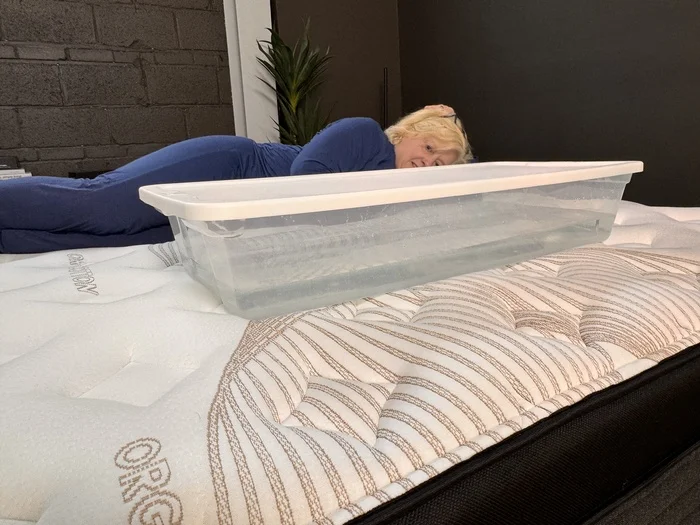
Cooling: 4.5/5
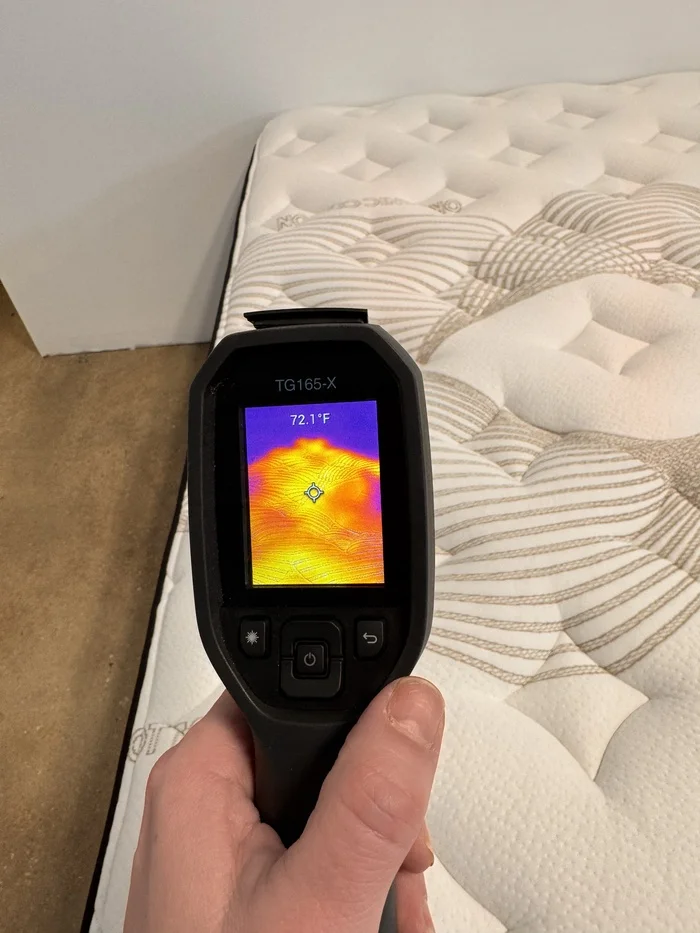
Responsiveness: 4/5
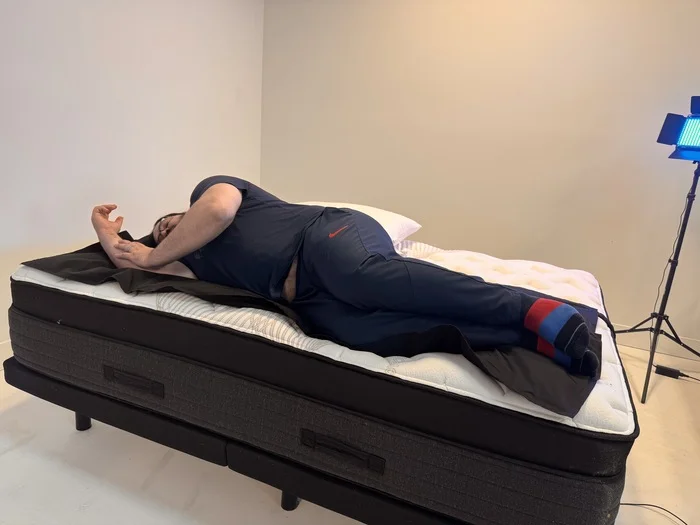
Edge Support: 4.6/5
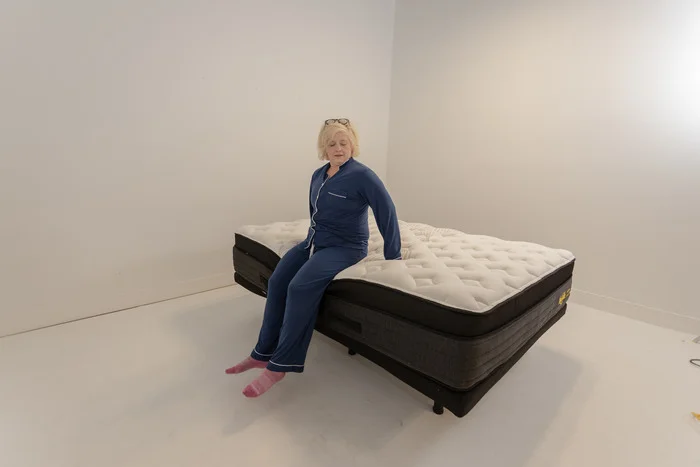
Pressure Relief: 4.3/5
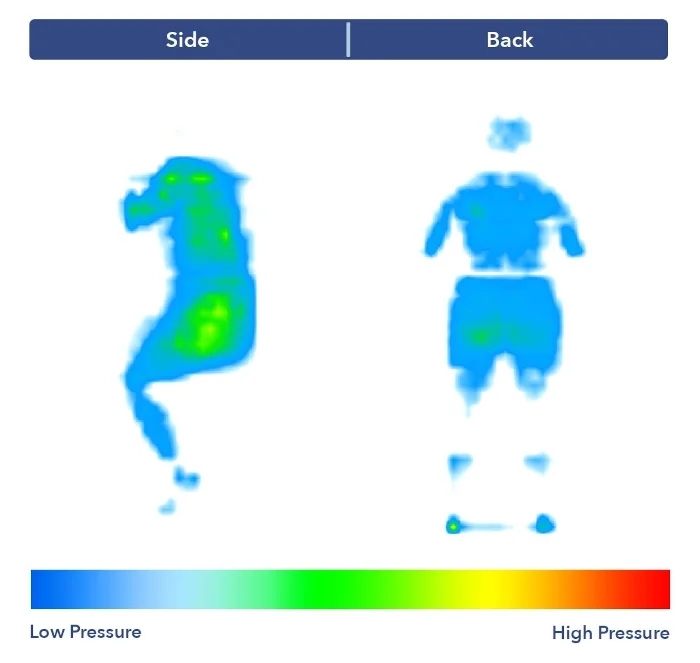
Firmness: 7/10
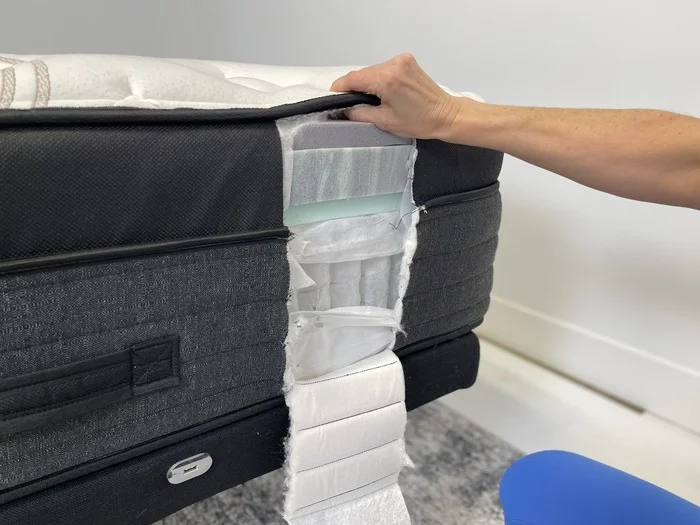
In addition to pressure and pain relief, I also want to call out the Evolution’s high performance on our motion isolation test, which earned an impressive 5-star rating. Through our testing, we learned that it’s a responsive mattress that falls in the “high bounce” category. Usually, this means the bed will struggle to absorb motion and prevent it from traveling across the bed. However, I found 5-star performances on all 3 of our motion isolation assessments. I can attest that I barely noticed my testing partner lay down on the bed or switch sleeping positions next to me. If you frequently experience disrupted sleep due to a restless partner beside you, this bed is an excellent choice.
One thing to keep in mind is this bed’s price. As a luxury mattress, it’s more expensive than a standard bed, with a queen size currently costing $2,127 at full retail. However, Nolah usually has a 30 percent off sale running, so you’re likely to get a queen for around $1,500. I’ll also note that the sleep trial period is 120 nights. This is a fair trial period, but we prefer mattresses come with a full 365-night trial.
Read more about our performance tests in our Nolah Evolution mattress review. If you want a more affordable luxury mattress, try the DreamCloud Premier Hybrid.
Nolah Evolution Sleepopolis Scores
| Test | Product Score | Average Score |
| Firmness | 7 | 6.7 |
| Pressure Relief Side | 4.33 | 3.5 |
| Back Pressure Relief | 4.33 | 4 |
| Motion Isolation | 5 | 4 |
| Responsiveness | 4 | 4.1 |
| Cooling | 4.5 | 3.9 |
| Edge Support | 4.6 | 4 |
| Bounce Height | 21.5 inches | 16.3 inches |
| Bounce Rating | High | Moderate |
| Sinkage | Deep | Moderate |
| Sex Score | 4.4 | TBD |
| Noise | 5 | 4.5 |
| Off-Gassing | 4.5 | 4.2 |
| Trial Period | 4 | 4.2 |
| Warranty | 4.5 | 4.6 |
| Full Rise | 5 | 4.7 |
| Unboxing/Moving | 3 | 4.4 |
Compare Performance Scores of the Best Mattresses of 2026
| Mattress Model | Overall | Motion Isolation | Cooling | Edge Support | Response | Pressure Relief |
|---|---|---|---|---|---|---|
| Helix Midnight Luxe | 4.5 | 4.0 | 4.0 | 4.8 | 4.0 | 4.2 |
| DreamCloud | 4.8 | 4.7 | 4.5 | 4.0 | 5.0 | 4.3 |
| Nectar Premier | 4.3 | 3.7 | 4 | 4 | 3.5 | 4 |
| Leesa Sapira Chill | 4.3 | 3.0 | 4.5 | 3.4 | 2.0 | 4.5 |
| WinkBed | 4.3 | 4.3 | 4.0 | 4.4 | 3.0 | 3.8 |
| Saatva Classic | 5.0 | 2.8 | 4.0 | 5.0 | 5.0 | 4.0 |
| Silk & Snow Hybrid | 4.4 | 4.7 | 4.5 | 3.6 | 4 | 3.9 |
| Brooklyn Bedding Aurora Luxe | 4.9 | 4.7 | 5.0 | 4.4 | 5.0 | 4.2 |
| Bear Elite Hybrid | 4.6 | 4.7 | 4.5 | 4.5 | 4.0 | 4.0 |
| Nolah Evolution | 4.7 | 5.0 | 4.5 | 4.6 | 4.0 | 4.3 |
Other Mattresses I Considered
Here at Sleepopolis, we’ve tested over 375 mattresses, so not all of them are going to make the list. Here are some other options that were in the running for my best mattress list, and why they didn’t quite make the cut.
- Purple: Purple is known for its polymer grid, which is squishy, stretchy, and has a waffle design. When testing the Purple mattress, some of our testers loved the uniqueness of its grid, but some found it uncomfortable. So we ultimately decided not to put it on our best mattress list.
- Casper: As one of the oldest players in the bed-in-the-box game, Casper has a variety of mattresses, including its all-foam flagship bed. I actually owned a Casper for seven years and found it to be a comfortable mattress overall. But it doesn’t have a ton of extra features, so I thought it came up a little short compared to other beds on this list.
- Emma Hybrid Comfort: The Emma Hybrid Comfort is a luxury mattress offered at a value price. While I think it’s a great deal, it’s also very firm and may not appeal to a lot of sleepers out there.
- Titan Plus Core: The Titan Plus Core was designed specifically for heavy sleepers over 230 pounds and is a highly durable bed. The only reason I didn’t include it here is because a lot of lightweight and average-weight sleepers may find it to be too firm. That said, it ranks near the top of our list of the best mattresses for heavy people every year.
- Plank Firm: This is a truly unique mattress from Brooklyn Bedding for two reasons — it’s flippable and is exceptionally firm, despite being made of foam. While I’m personally a fan of the Plank Firm, we ended up not including it on this list because its firmness tends to appeal to a small population of sleepers.
- Leesa: This is another all-foam mattress that I find very comfortable, especially for back sleeping. But, its lack of extra features kept it off the list.
- Tempur-Pedic TEMPUR-Adapt: As one of the pioneers of memory foam, Tempur-Pedic makes all of their mattresses out of proprietary Tempur material, which provides exceptional sinkage and pressure relief. With its medium-firm feel, the TEMPUR-Adapt is one of the brand’s most popular beds, but it’s also very pricey. While that isn’t necessarily a dealbreaker (some of the mattresses on this list, including the Saatva Rx, are expensive, too), I don’t think the bed’s comfort warrants the price tag.
- Sleep Number 360 pSE Smart Bed: This mattress — like all Sleep Number beds — has a range of advanced features, from customizable firmness to an app that makes adjustments to the bed while you sleep based on your temperature, heart rate, and other data. But like Tempur-Pedic mattresses, I don’t think the extra features are so life-changing that they justify such a high cost.
How We Picked and Tested These Mattresses
We test each of our mattresses using an in-depth testing methodology that our team of certified sleep science coaches developed over the past decade with input from experts in the sleep and medical fields.
And while we don’t cut corners in our approach, we do cut mattresses! We actually open a small cross section of each mattress so we can really get an idea of what its construction is like, which informs some of our testing scores, including cooling. Here’s a quick breakdown of each of our tests and how they work:
Cooling
Body temperature and quality sleep are closely tied. We evaluate the mattress’s construction (for instance, hybrids usually sleep cooler than memory foam beds), then use a thermal gun to measure the temperature increase after 5 minutes of one of our testers lying on it. 5 degrees or less indicates excellent cooling, 5 to 10 degrees indicates good cooling, 10 to 15 degrees indicates decent cooling, and over 15 degrees indicates poor cooling.

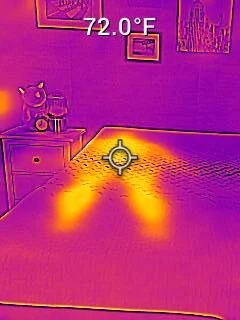
Motion Isolation
If a mattress isolates motion well, then you and your partner are less likely to feel each other tossing and turning at night. We test this by having two of our testers roll around next to each other and note how much movement they can feel. Then we run a more objective test where we drop a steel ball onto the bed from several different heights (each height approximates a different sleeping motion), then measure the vibrations with a seismometer. The higher the vibrations, the more likely you are to feel your partner’s movements.

Responsiveness
This is a simple test where our testers lie on the mattress and see how easy it is to change sleeping positions. We also have our testers press firmly in the middle of the mattress for 7 seconds then let go, seeing how each layer responds. Both of these tests tell us if it’s a good mattress for combination sleepers.
Pressure Relief
We try out every mattress in every different sleeping position, noting which positions feel most comfortable. But our team also runs each position through our pressure map test, which involves rolling a specialized mat across the bed. The mat reads how much pressure the mattress is putting on our tester’s body in each position, then creates a color-coded graphic or “map”. Blue indicates no pressure, green indicates little pressure, yellow indicates moderate pressure, orange indicates high pressure, and red indicates very high pressure.
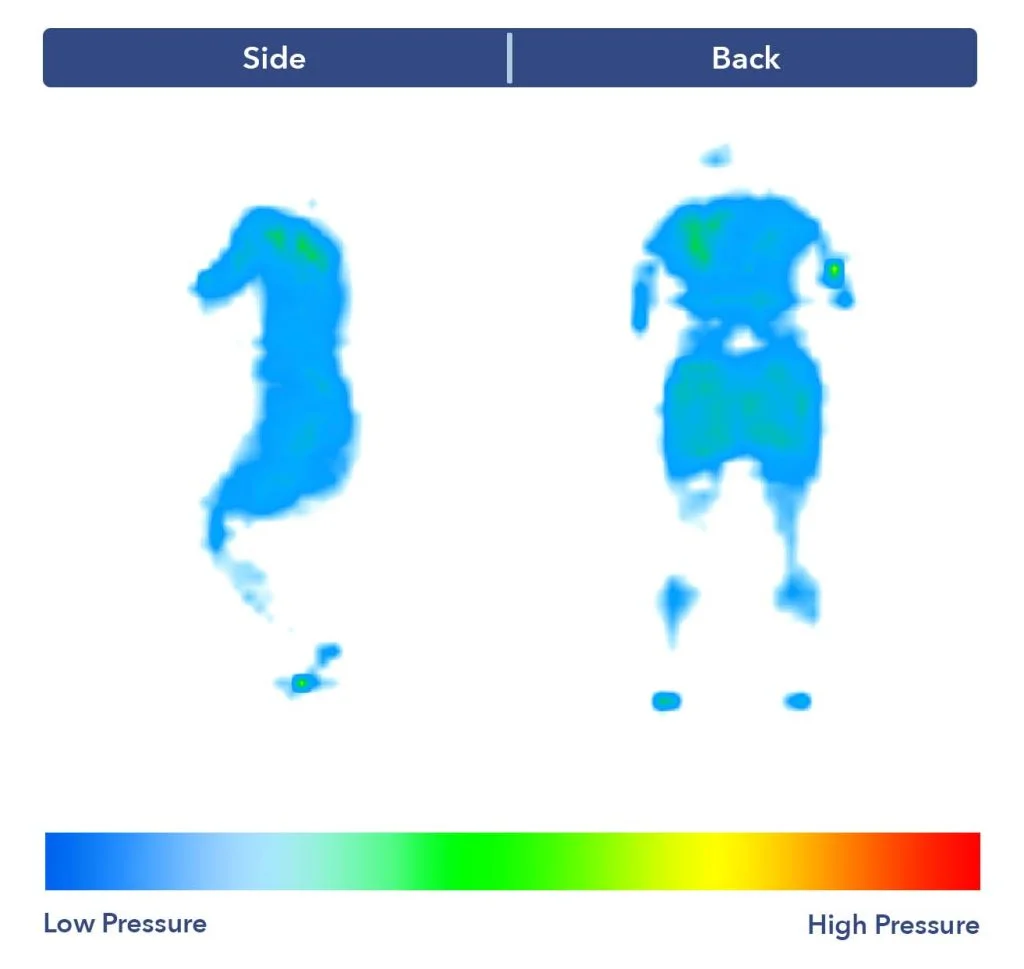
After all of these tests, our testers score each category from 1 to 5. We also evaluate non-testing categories such as trial and warranty. For instance, if a mattress offers a lifetime warranty, it automatically gets a 5.
When putting together my top picks, I narrowed down my selections by only including beds that scored a 4 out of 5 or higher in at least seven of our 10 testing categories, then going off of my personal experience with each mattress and deciding what kind of sleeper it’d be best for. Additionally, Dr. Dasgupta said, “The wrong mattress can make your pressure point pain more problematic. If you’d like your mattress to help mitigate pressure build-up, make sure that it offers the right support and firmness for your needs.”
What to Consider When Buying a Mattress
Below are a few considerations you should take into account when purchasing a new bed. These relate to body type, sleeping position, pain management, and other factors. You can also take a look at our guide on how to choose a mattress that fits your needs, and if you’re still feeling overwhelmed, consider taking our mattress quiz for a personalized recommendation.
Sleeping Position
The position you’re in while you snooze may have a profound effect on your sleep quality and overall comfort. “Maintaining the spine’s natural curve is crucial,” advises Dr. Raj Dasgupta.
So what kind of mattress should you get based on your sleep position? Here’s a quick guide:
- Side sleepers do best on soft to medium-firm mattresses that cushion pressure points at their hips and shoulders. Check out our best mattresses for side sleepers roundup.
- Back sleepers need an appropriate balance of pressure relief and support to keep their spines in a straight line, and they’ll typically find that in a medium-firm or a firm mattress. They can find some high-quality options in the best mattress for back sleepers roundup.
- Stomach sleepers put the most pressure on a mattress of all the sleeping positions, and thus need a firm bed that gives them a nice lift (some medium-firm mattress options can work, too). This helps keep their hips aligned with their shoulders, which prevents the spine from getting misaligned. Learn more in our best mattresses for stomach sleepers guide.
- Combination sleepers usually prefer mattresses that are easy to move around and change positions on. We recommend these sleepers stick to a bouncy mattress with a medium-firm feel, like the ones in our best mattresses for combo sleepers guide.
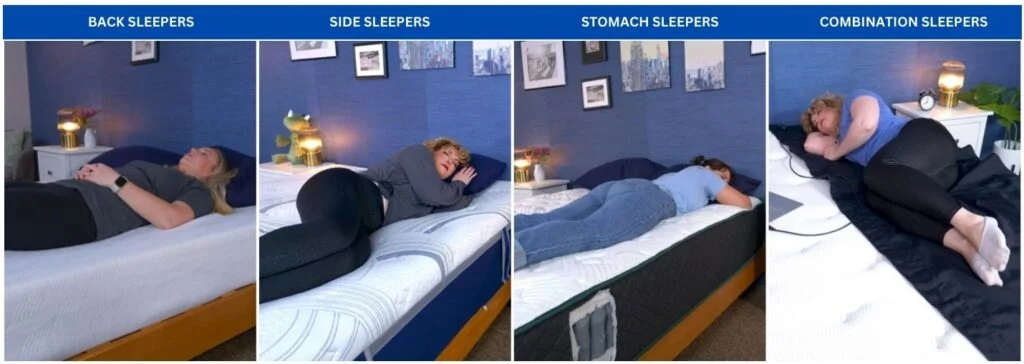
Mattress Material and Type
What’s in your mattress? It matters more than you might think:
- Innerspring mattresses are made of two layers of springs, or coils, and generally topped with a smaller layer of foam for comfort. They often have a firm, bouncy feel and work well for stomach, back, and combination sleepers. This type of mattress is exceptionally good for cooling due to the breathable layers of springs. Innerspring mattresses typically offer a lot of support as well. You can check out our best innerspring mattresses guide to learn more.
- Memory foam mattresses are made entirely of foam, without any coils. They’re usually a good option for side sleepers and anyone who likes to feel “hugged” by their mattress, although they are available in firmer options, too. Due to the density of the material, memory foam beds can be somewhat limited in their cooling capabilities, and are usually not as durable as a hybrid or innerspring mattress. Take a look at the best memory foam mattresses to learn more about these beds.
- Hybrid mattresses use a mix of foam and innerspring coils, and there is a lot of variety in construction and feel. Of all the mattress types, they probably have the most versatility and can appeal to many different sleepers. One downfall of these mattresses, however, is that they’re generally more expensive. Learn more over at our list of the best hybrid mattresses.
- Latex mattresses are often made with eco-friendly Dunlop or Talalay latex foam — a material that has a naturally porous construction and is good for cooling. Natural latex is also an organic material, meaning that it’s environmentally stable and allergen-resistant. We usually recommend them as a cooling mattress for hot sleepers, eco-conscious sleepers, and combination sleepers who need to change positions at night (latex is also naturally bouncy). Check out the best latex mattresses for more on this natural material.

Body Type and Weight
Most mattresses are designed for sleepers between 130 and 230 pounds — a group we refer to as “average-weight” sleepers. However, we also test our mattress for lighter weights (anyone under 130 pounds) and heavier weights (anyone over 230 pounds). The lighter you are, the firmer a bed will feel to you, which is why we recommend soft to medium-firm mattresses to most lightweight sleepers.
On the flip side, heavier sleepers will probably experience most beds as softer, so we recommend they opt for something extra-firm and supportive. To learn more about choosing a mattress for your body type, visit our page for best mattresses for heavy people.
Common Pain Areas
Choosing a sleep surface that helps mitigate pain is especially important for sleepers who live with chronic pain. I’ve selected mattress options that could help with several different types of pain, including the most common: shoulder pain, back pain, and hip pain.
Our pressure map test is usually the most important tool when making recommendations related to pain, as it creates a color-coded graphic that shows how much pressure a specific bed is putting on the body. Blue indicates no pressure, so if I’m choosing the best mattress for shoulder pain, for example, I’ll go with a bed where the graphic is entirely blue in that area.
See More: Best Mattress for Arthritis and Joint Pain
Mattress Size
Mattress size is important for a couple of reasons. The first is your preferences. Some people enjoy the cozy feel of a full or twin mattress, while others — especially if they like to sleep near the edge of their mattress — may want to spread out on a bigger bed.
The second consideration is price. Larger mattresses are more expensive, so understanding your budget may help you narrow down what size is best for you. Third, is who’s sleeping in the bed. If you’re shopping for yourself and a partner, then you may want more room, and will likely opt for a queen or king mattress. However, if you’re looking for a college dorm mattress, you might want to save money and be practical with a twin bed. Perhaps you’re shopping for a guest room mattress, in which case you might want to opt for a safe bet of a queen or full.
The last consideration is the size of the room in which the mattress is going. Again, if you’re shopping for a college dorm room, a twin might be all that will fit. However, if you’re looking for a bed for a master bedroom, you’re likely going king or queen. Considering these factors together can help you narrow down exactly what you’re looking for.
Price
Buying a new mattress is a big investment, so budget is definitely something to consider. One thing to keep in mind is that a pricier mattress is generally made with higher-quality materials and better construction. However, like anything on the market, a higher price does not always equal a better product.
While I usually tell consumers that they should be prepared to pay between $1,000 and $1,500 for a high-quality queen-size mattress, there are plenty of quality budget options out there that can still give you an excellent night’s sleep. For example, the cheapest queen mattress on this list can usually be found for around $850 before discounts. We also have several price-based lists to help you find the bed that makes the most sense for your wallet:
- Best Cheap Mattresses
- Best Mattresses Under $1,000
- Best Mattresses for the Money
- Best Luxury Mattresses
Warranty and Sleep Trial
If you’re buying a mattress online, a sleep trial is especially important, as you won’t be able to try it in-store beforehand, unless you have a showroom nearby. I recommend looking for beds that offer at least a 100-night trial with free returns so you can test out your purchase and make sure it’s right for you. Some mattress brands, such as Nectar, offer exceptionally generous trial periods of 365 nights.
You’ll also want to look at the length of the mattress’s warranty. A longer warranty is often a testament to its quality. A 10- to 15-year warranty is decent, but a forever warranty is probably going to give you the most piece of mind.
FAQs
How much should I spend on a mattress?
While this is going to depend on your individual budget, a value mattress is generally considered to be one that’s under $1,000 for a queen size. So set that as your spending limit if you’re looking to save money. If you have more financial flexibility, you can usually find a high-quality mattress for between $1,000 and $1,500. And if you want a luxury bed, you should be ready to spend upwards of $1,500.
When is the best time to buy a mattress?
Many bedding brands launch huge sales around federal holidays, so keep an eye out for deals around President’s Day, Memorial Day, and even Labor Day. You’ll also naturally find a ton of deals around Black Friday and Cyber Monday. Check out our mattress coupons and promo codes page year-round to stay up to date on the latest discounts.
How often should I replace my mattress?
In general, you should replace your old mattress every 7–10 years. However, a mattress can sag prematurely if you don’t place it on a proper foundation or treat it roughly. You can also extend the life of an old mattress for a few months by adding a mattress topper.
Whenever you’re buying a new bed, it’s important to take a look at its warranty, which can also give you a good idea of how long it should last.
What is the best mattress for back pain?
Most people who struggle with back pain find that a firm or medium-firm mattress is best for them. This type of bed will help you keep your spine straight overnight, which can help alleviate a lot of pain. To find a mattress that can help with your specific back pain, check out our roundup of the best mattresses for back pain.
What’s the best mattress for stomach sleepers?
Of all the sleeping positions, stomach sleepers require the most support. With that in mind, they’re best off with a bed that’s reinforced with pocketed coils. For an expansive selection, they can always check out our roundup of the best mattresses for stomach sleepers.
What type of mattress lasts the longest?
Mattresses with innerspring coils in their construction (latex hybrids, memory foam hybrids, and traditional innerspring models) are typically more durable and resistant to sagging over time. These coil systems provide strong support, which helps the mattress maintain its shape longer. However, high-quality memory foam mattresses can also last for a decade or longer. Look for memory foam mattresses that feature dense foam and reinforced edges for added durability.
Sources
- Caggiari Gianfilippo. What type of mattress should be chosen to avoid back pain and improve sleep quality? Review of the literature. Journal of Orthopaedics and Traumatology. 2021. https://jorthoptraumatol.springeropen.com/articles/10.1186/s10195-021-00616-5
- Harding Edward C, Franks Nicholas P, Wisden William. Sleep and thermoregulation. National Library of Medicine. 2020.https://pmc.ncbi.nlm.nih.gov/articles/PMC7323637/

































